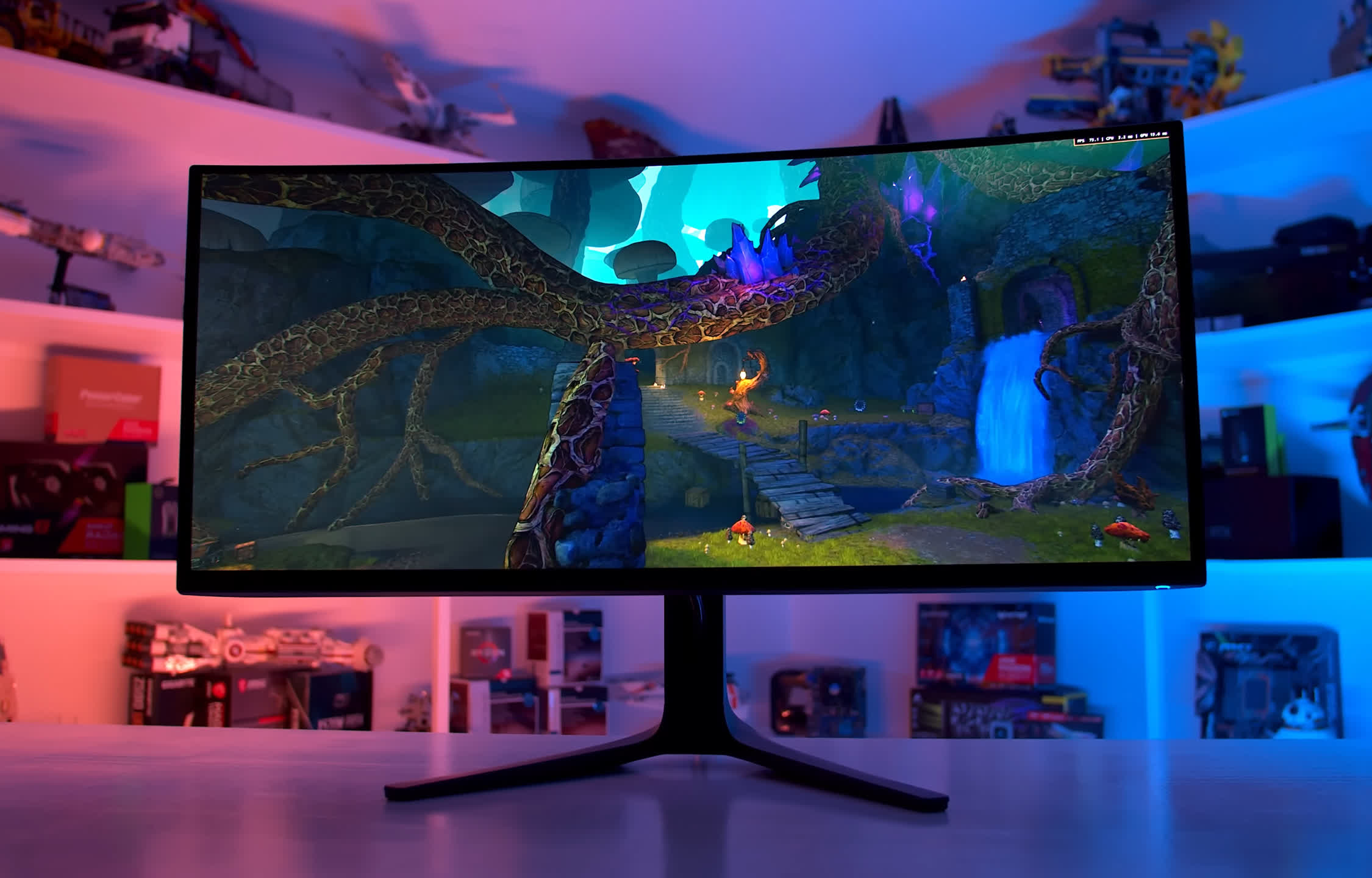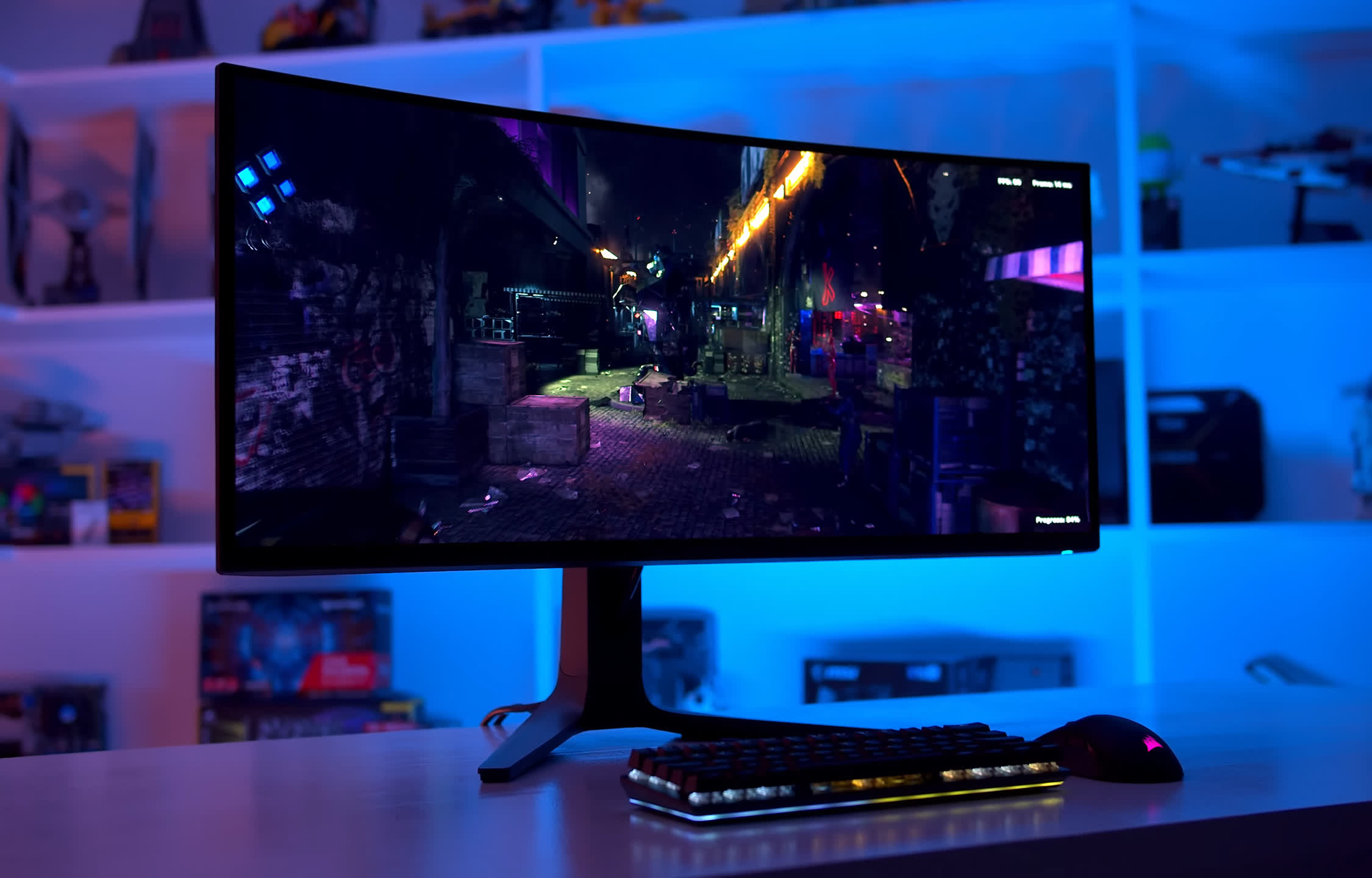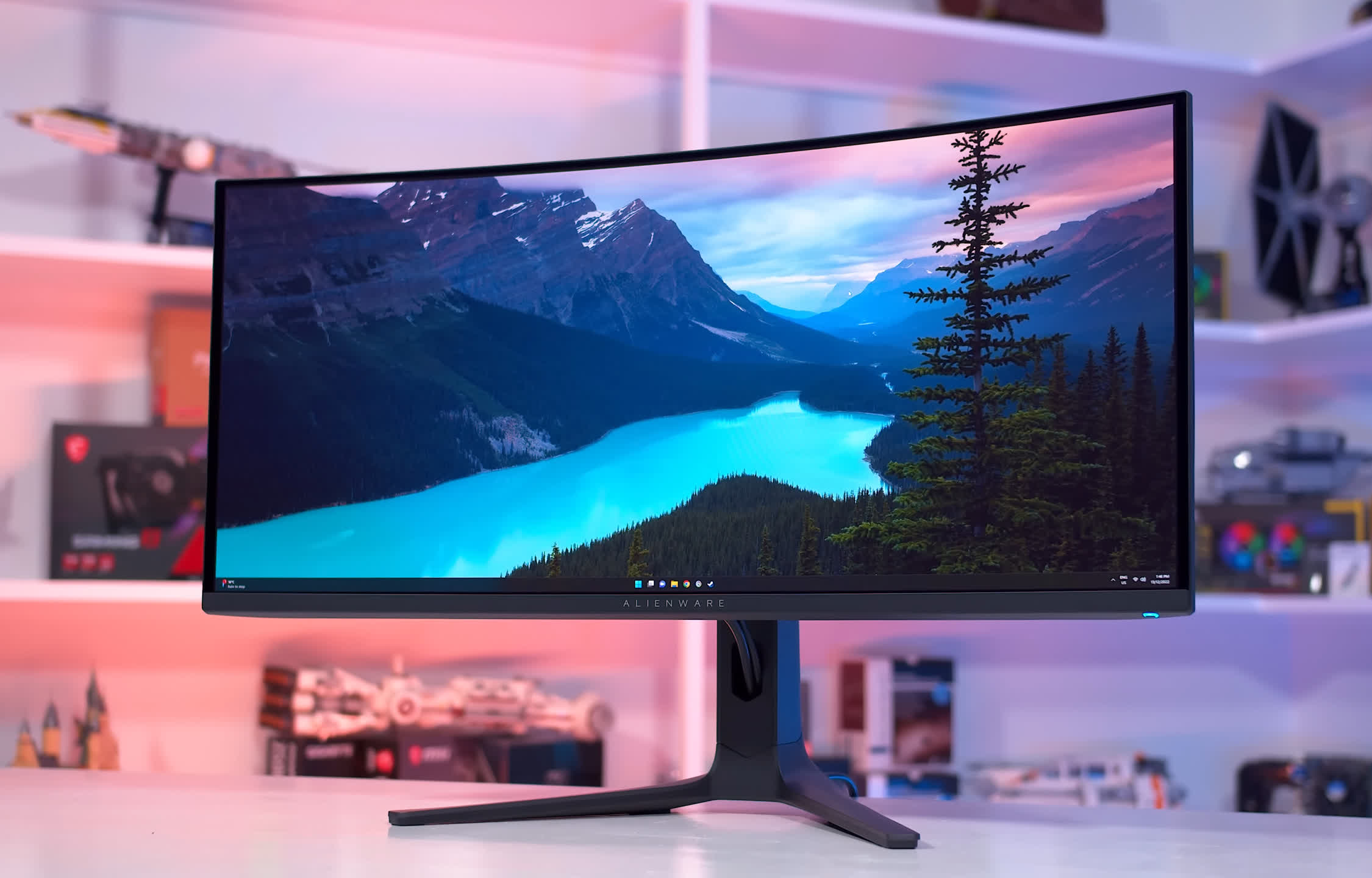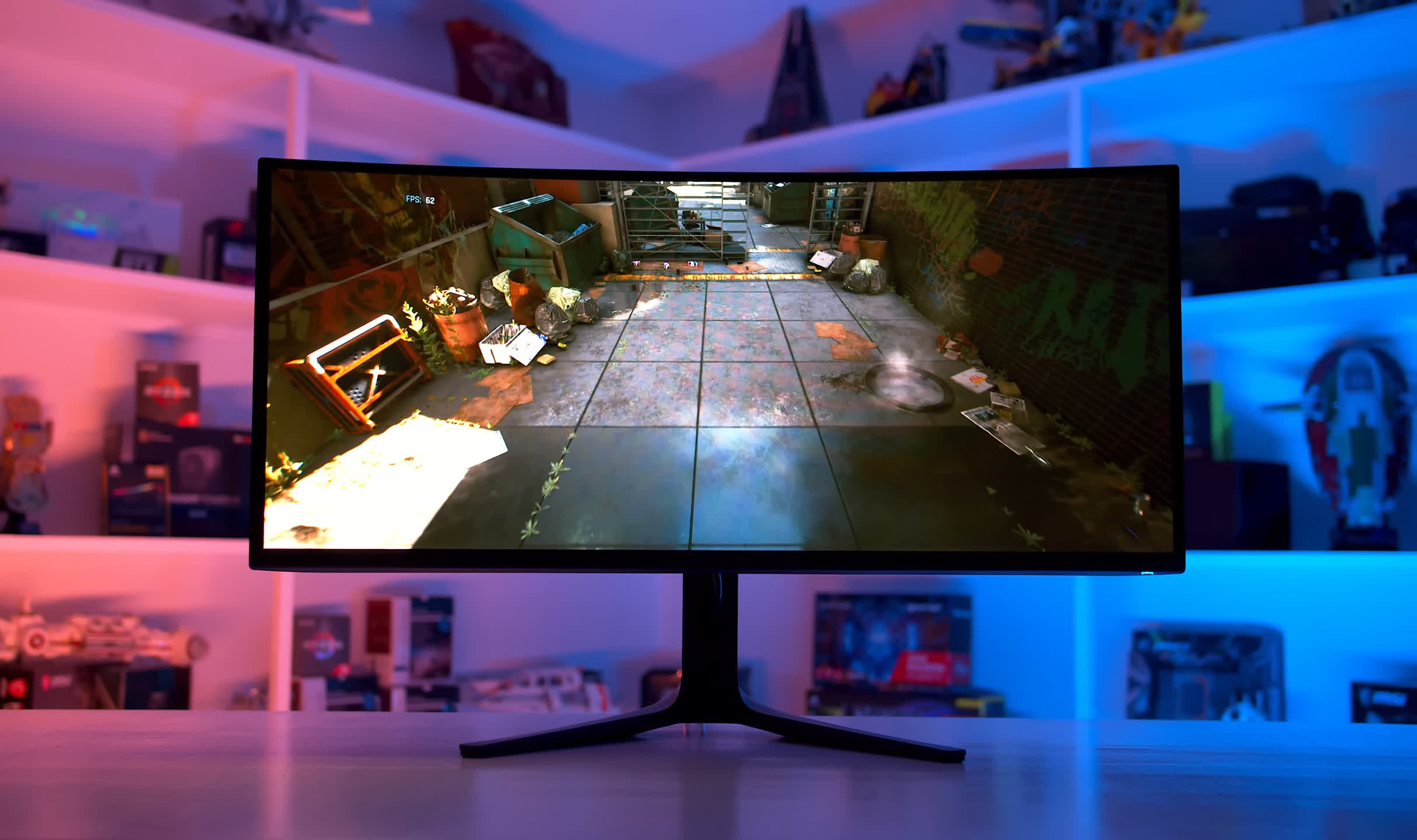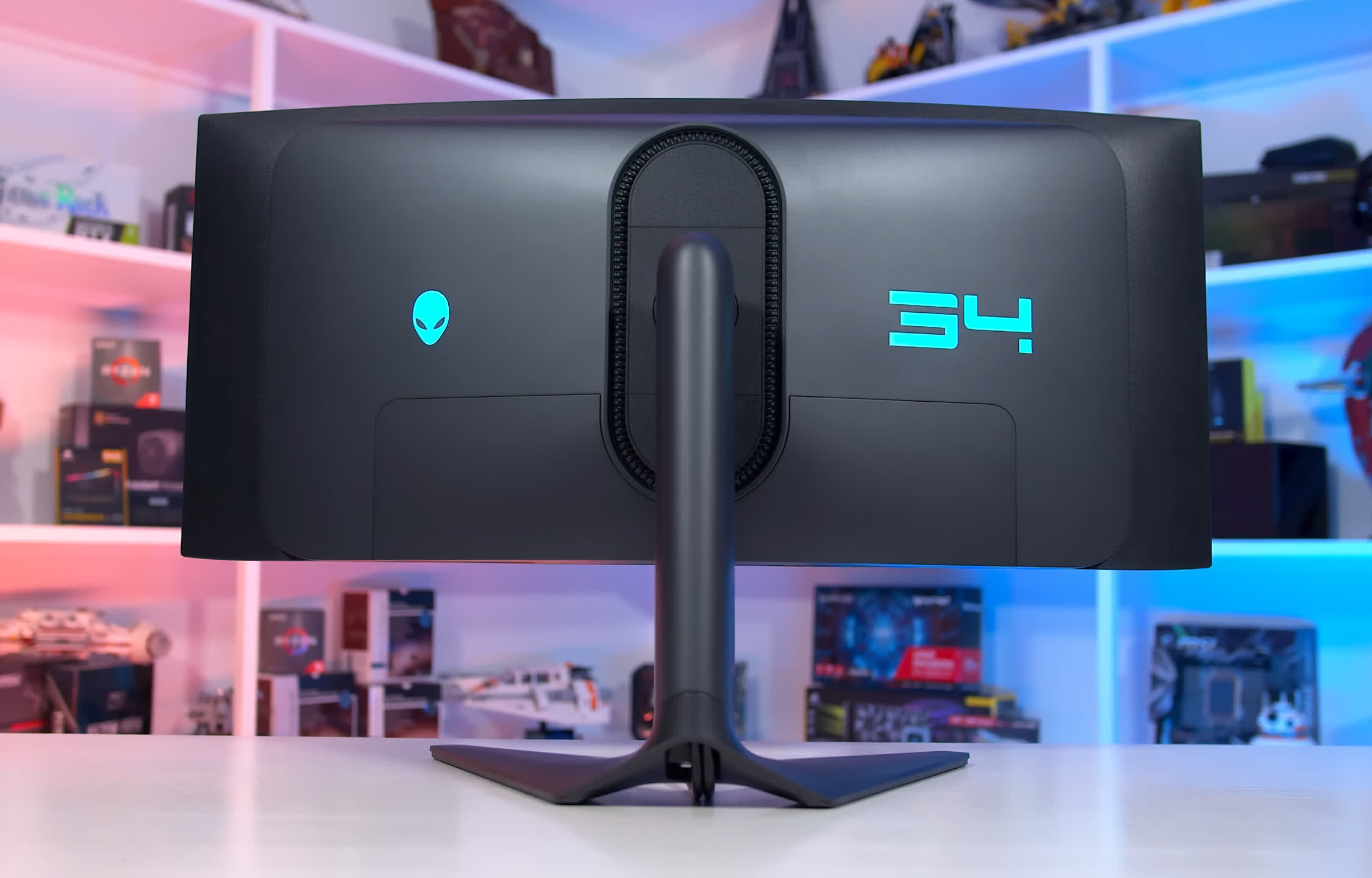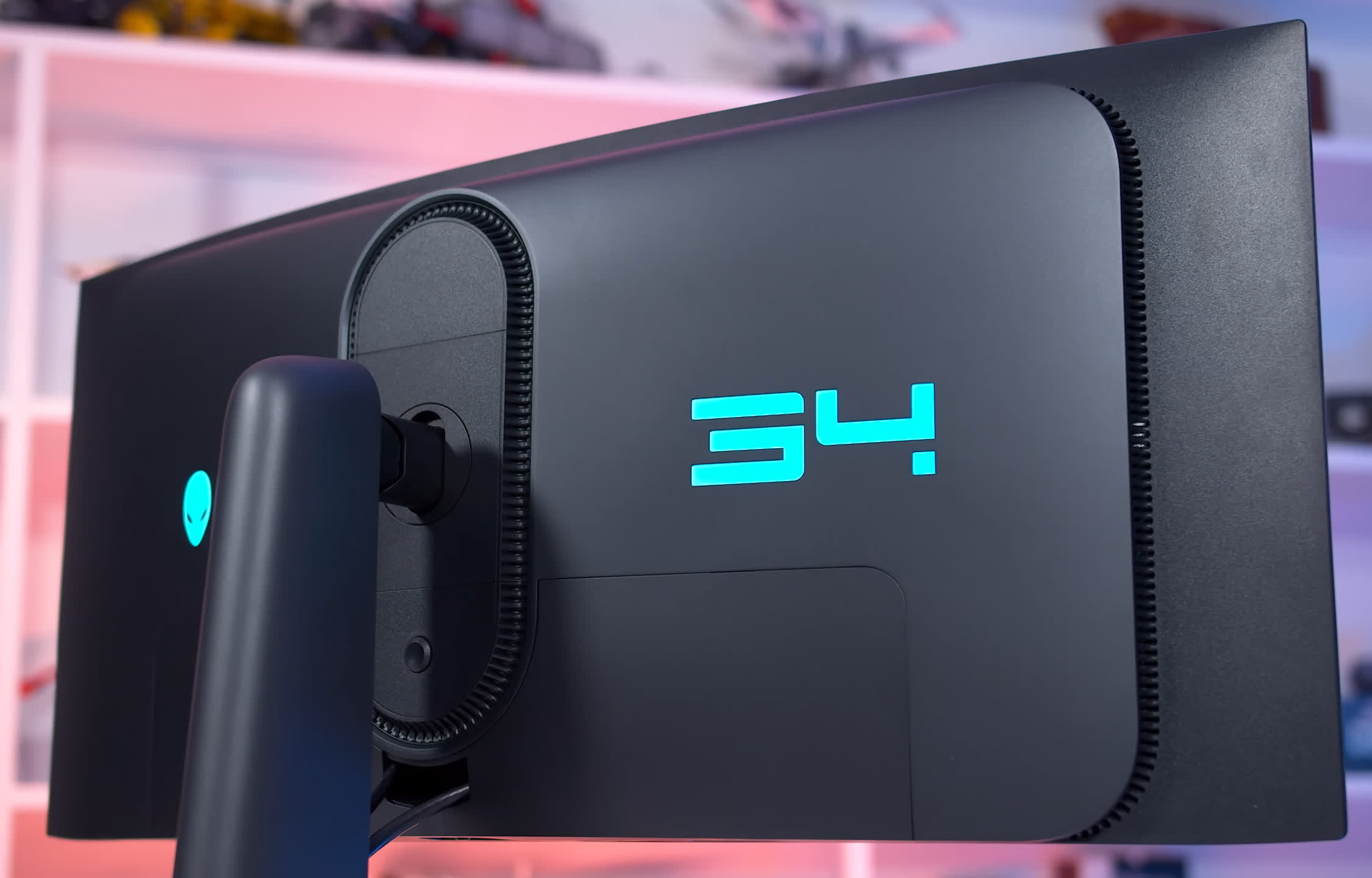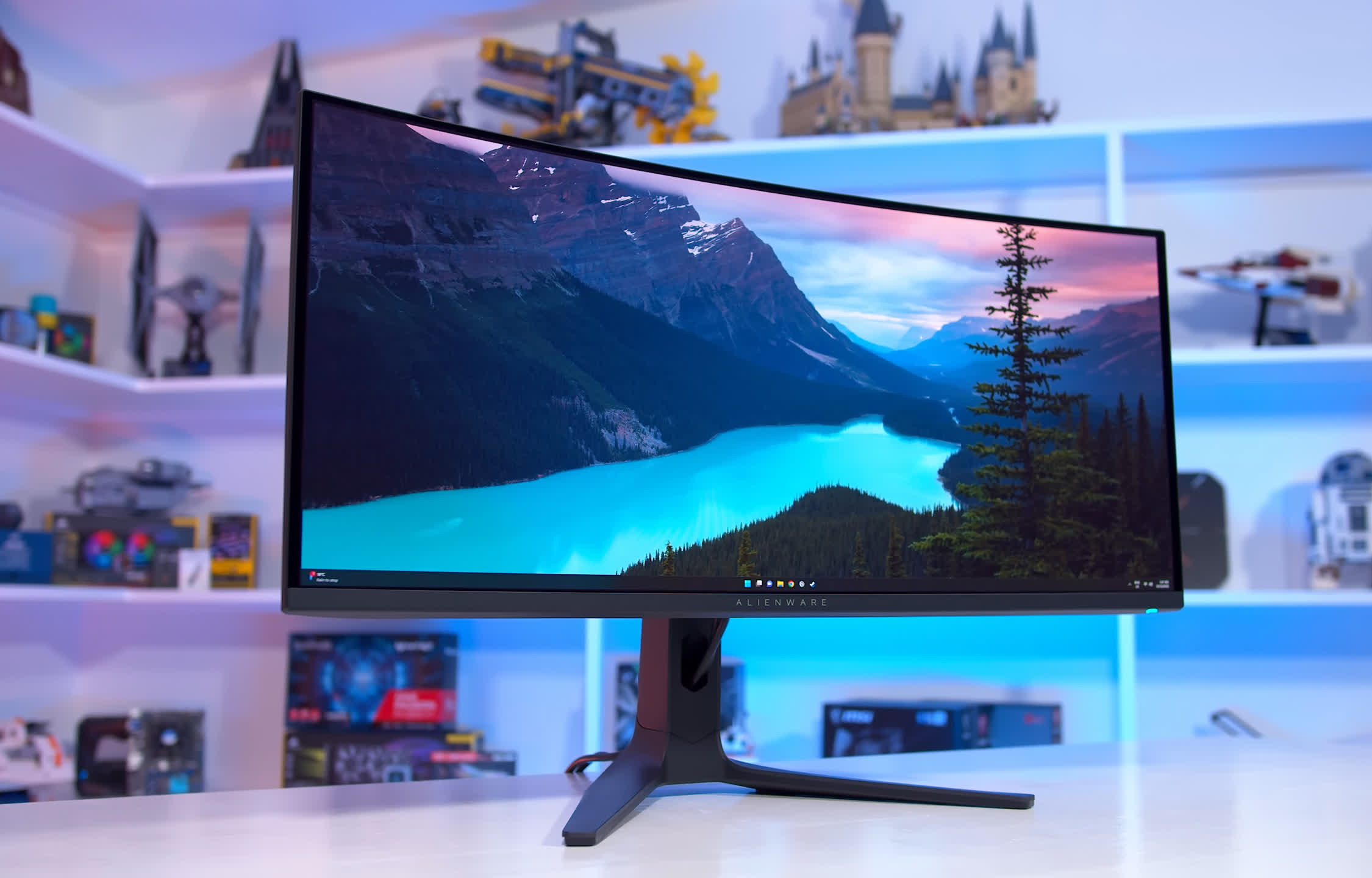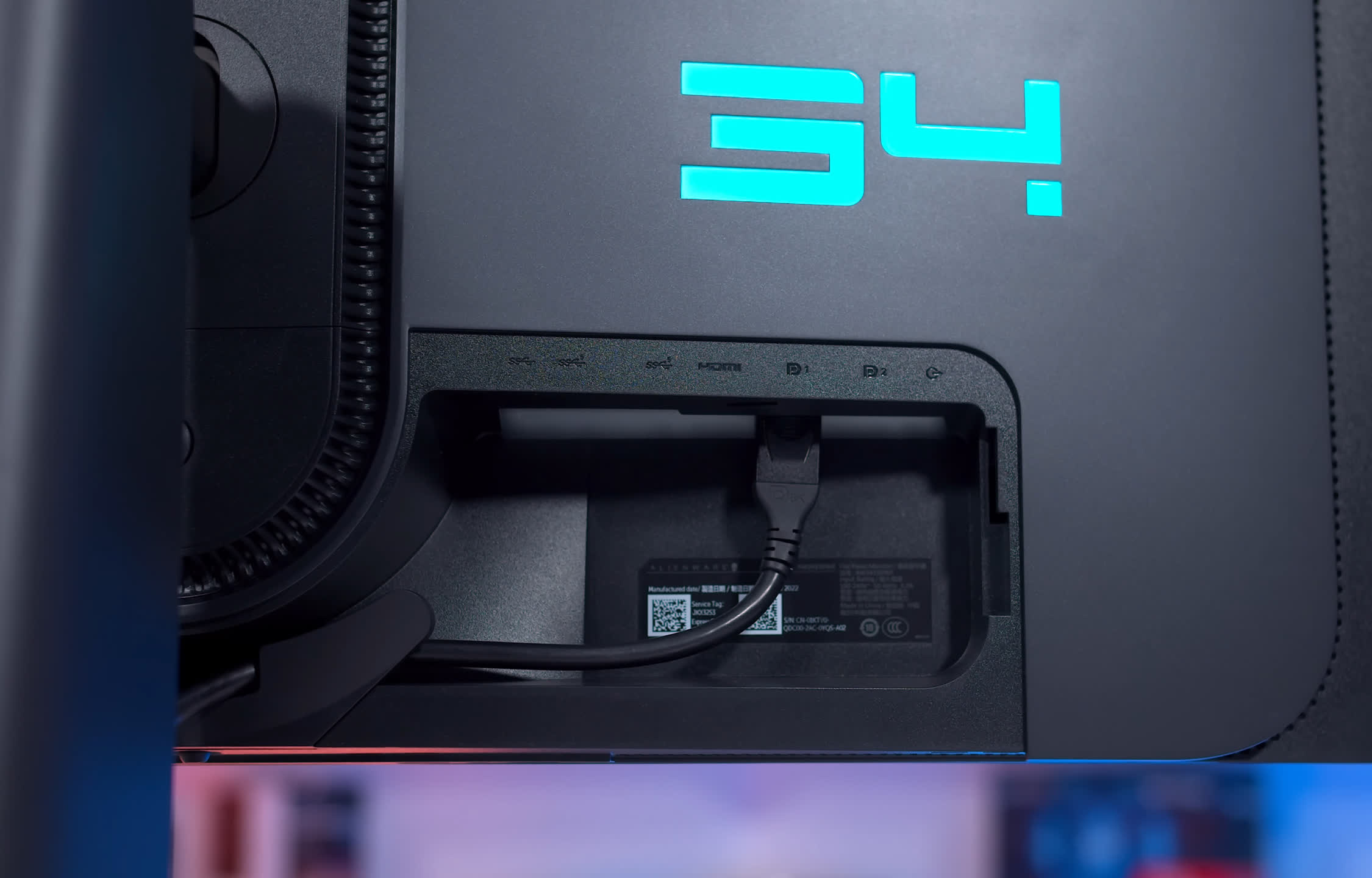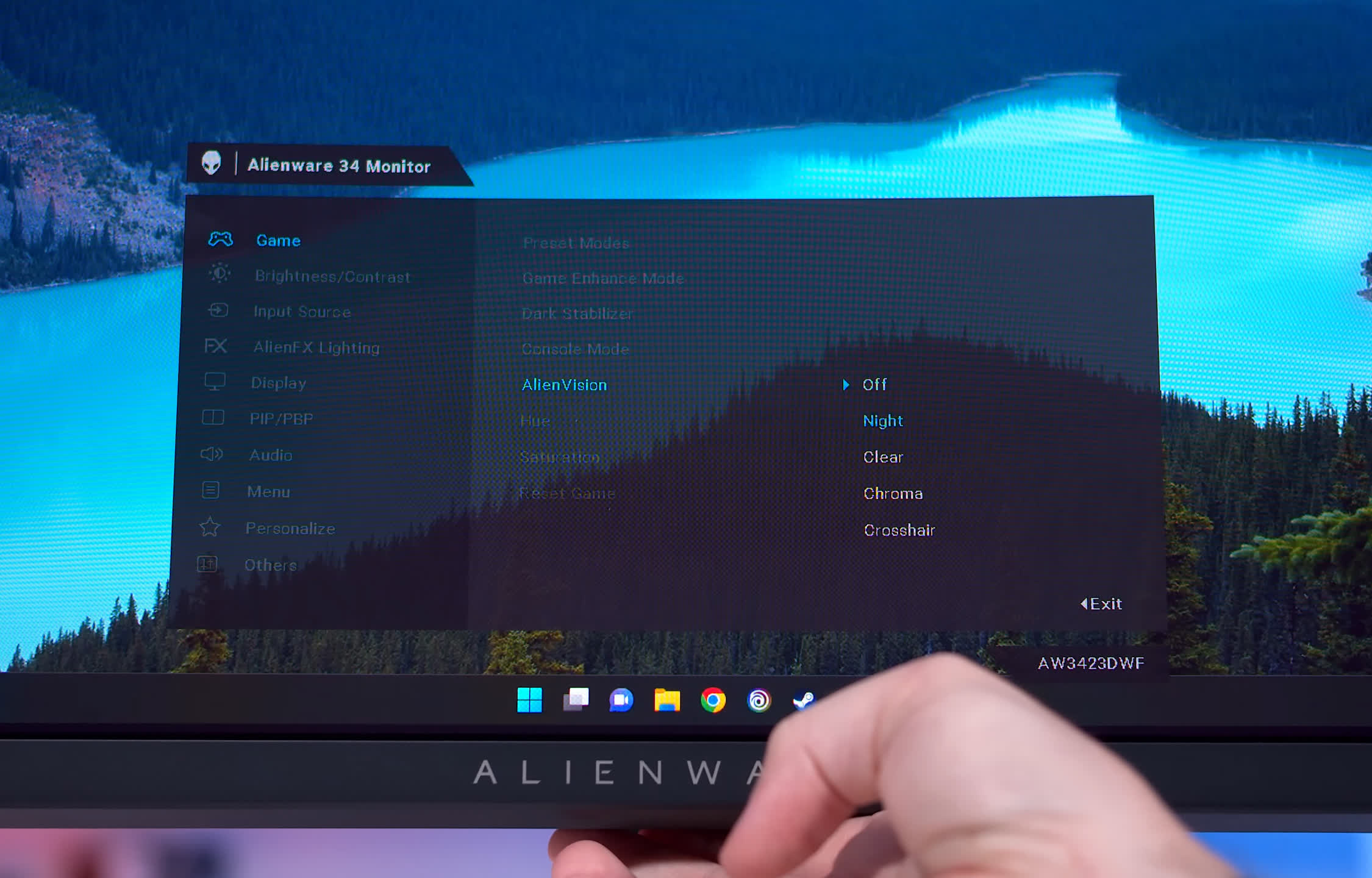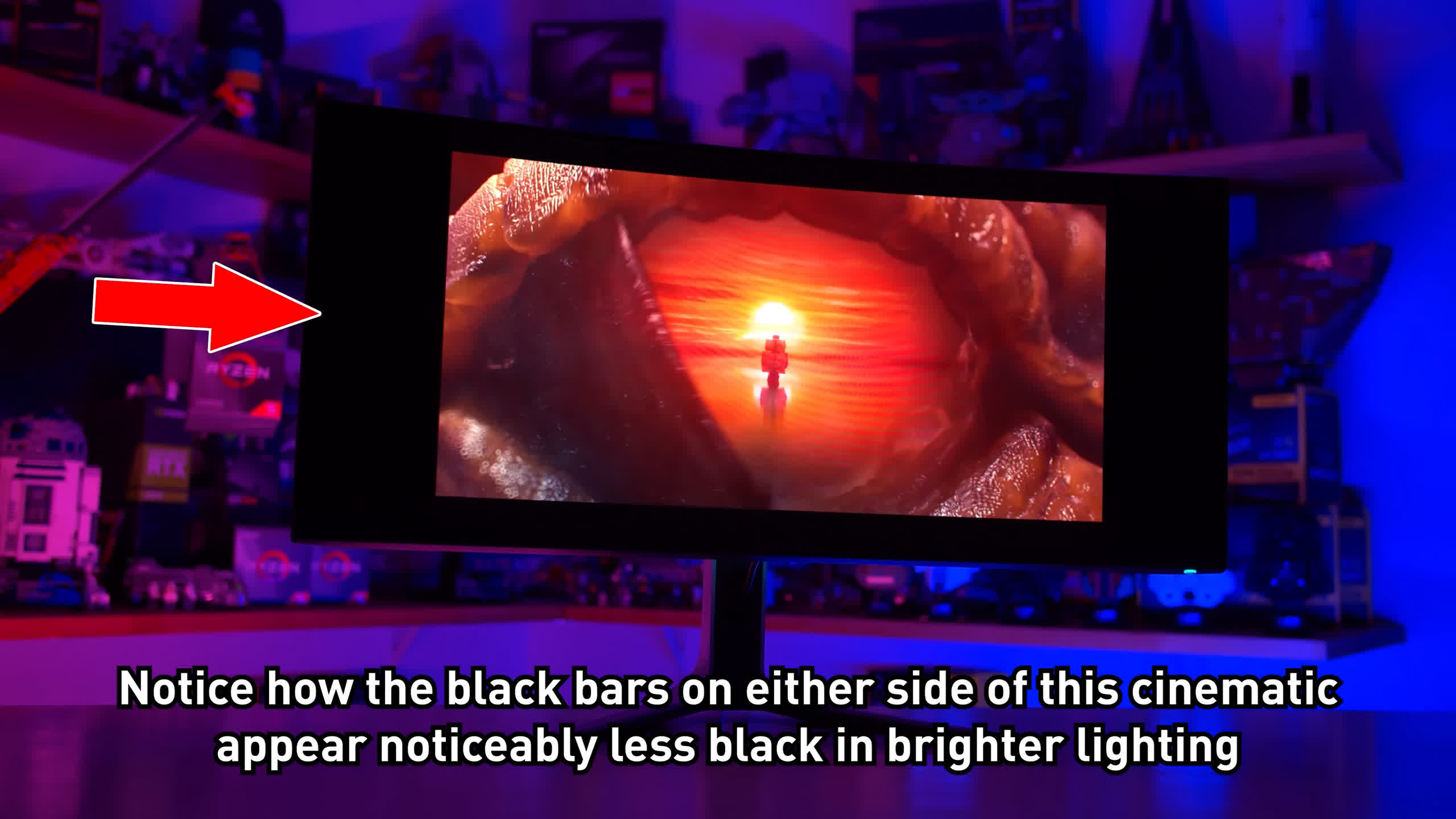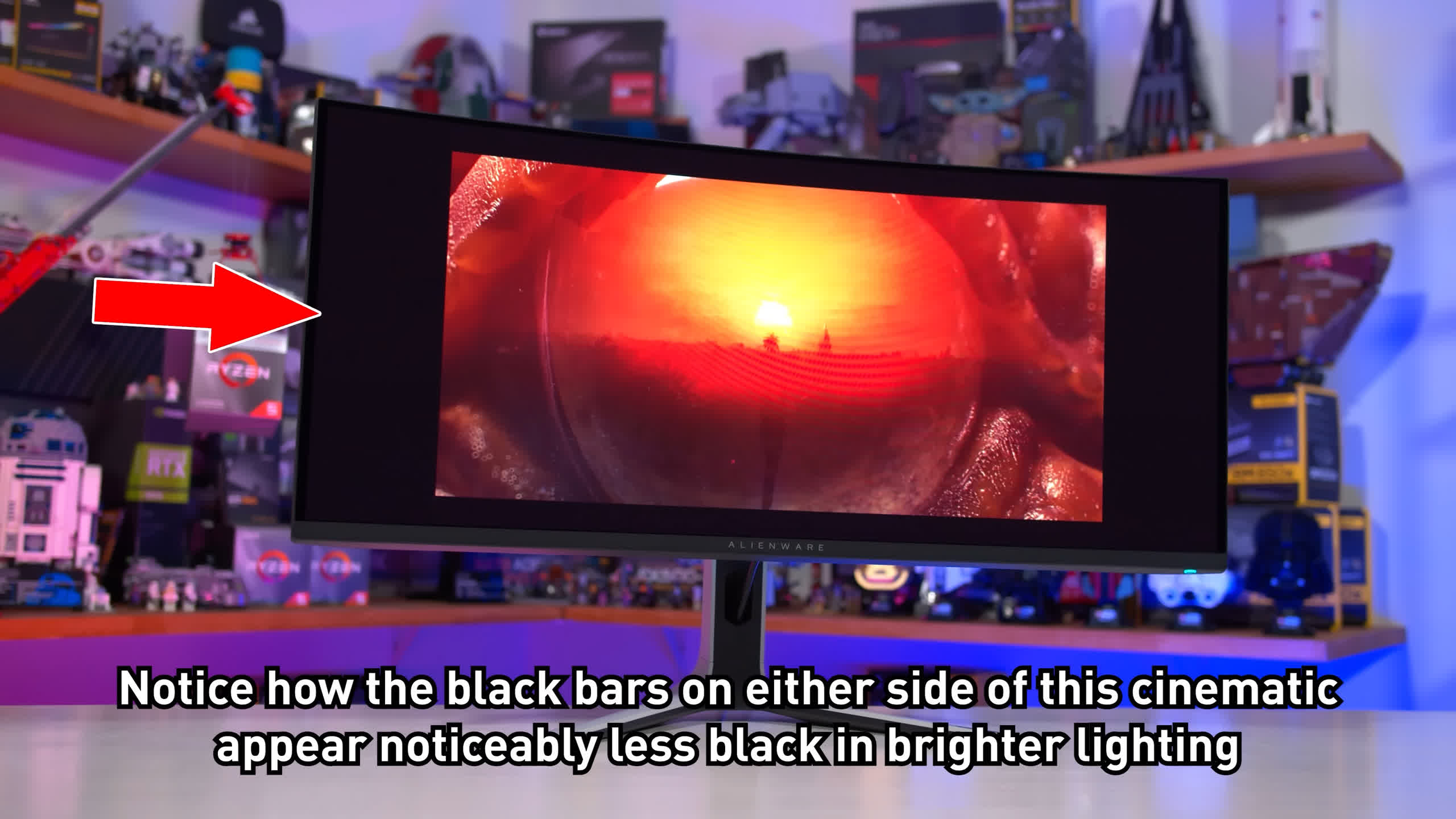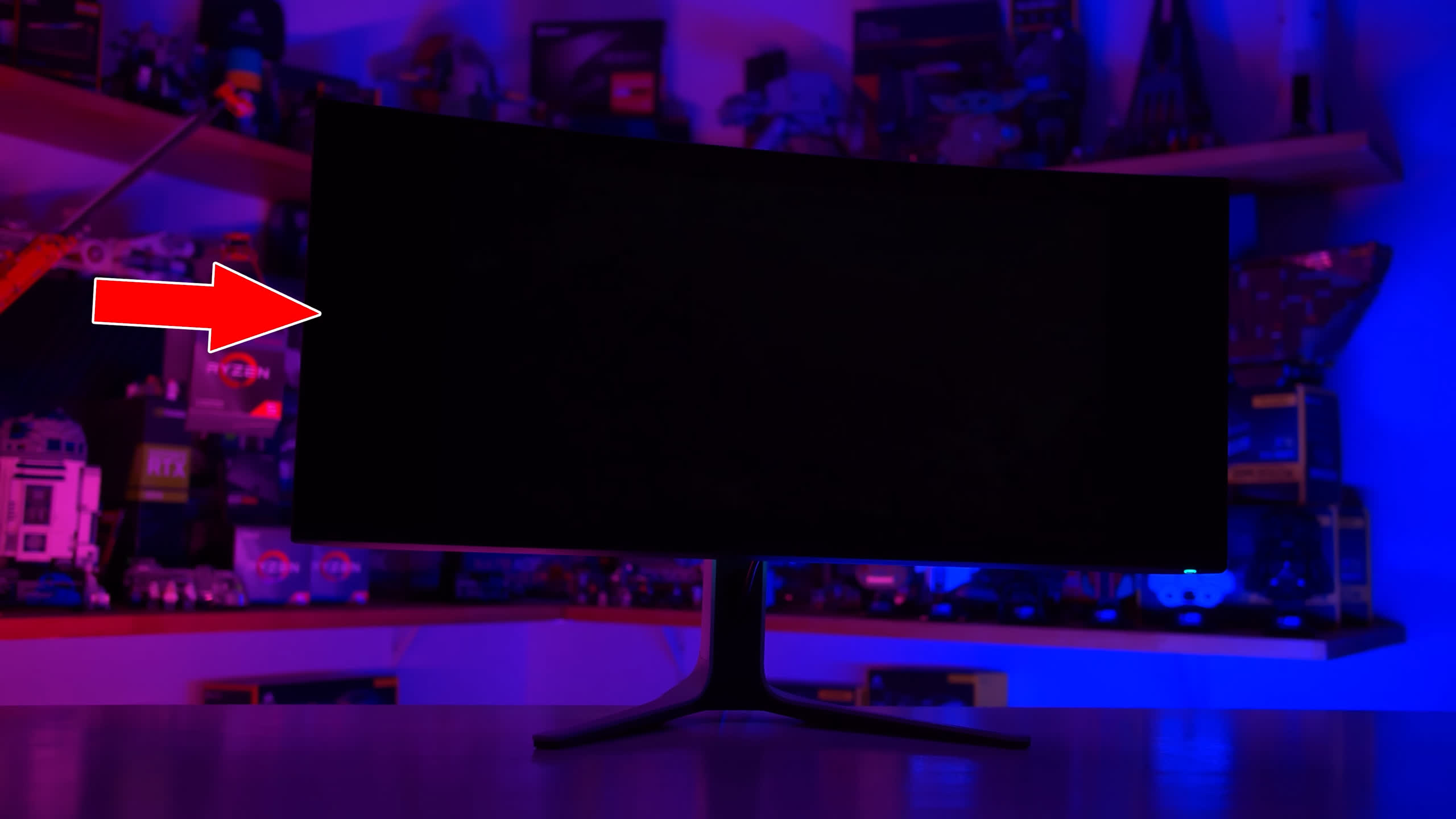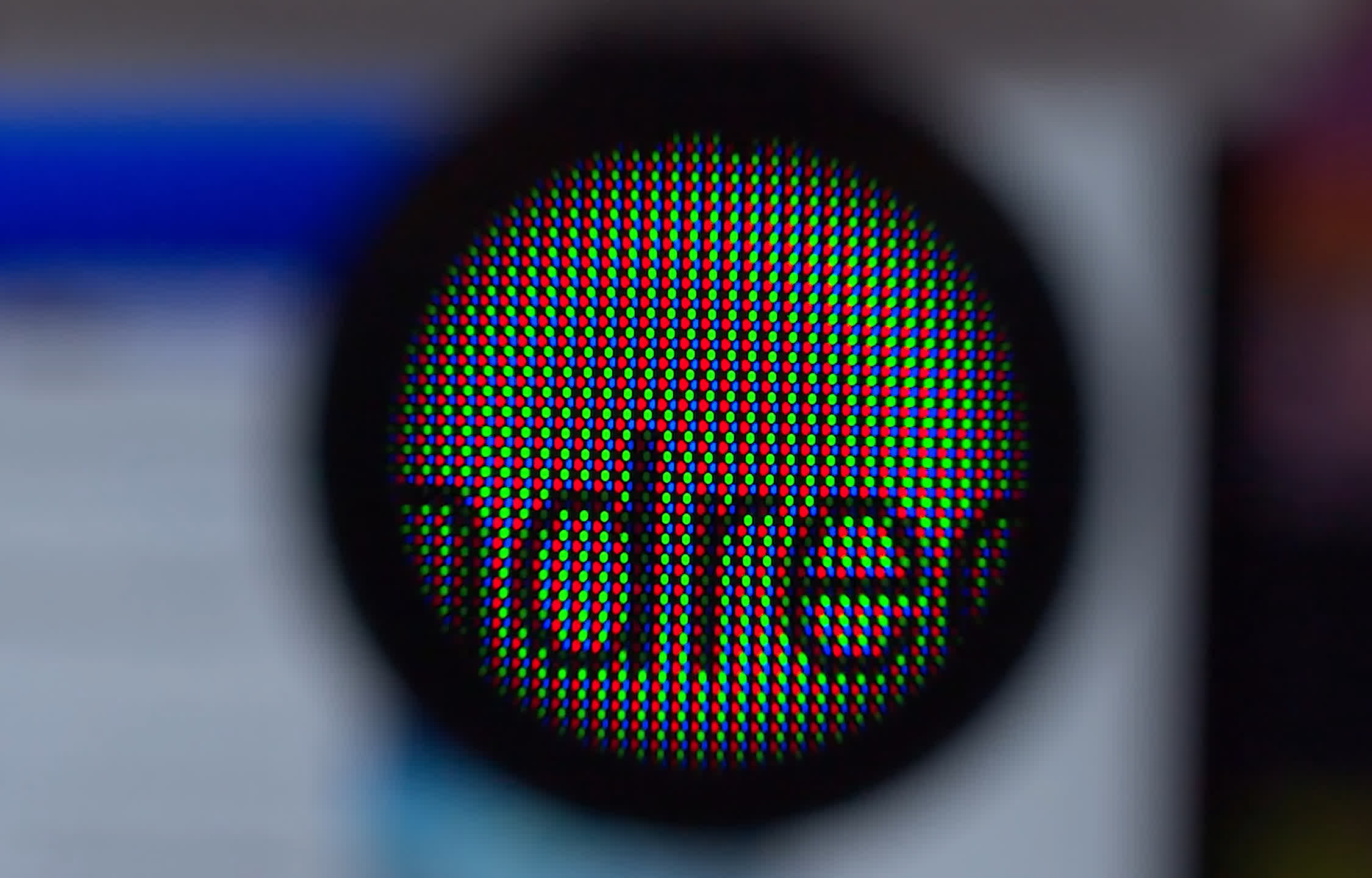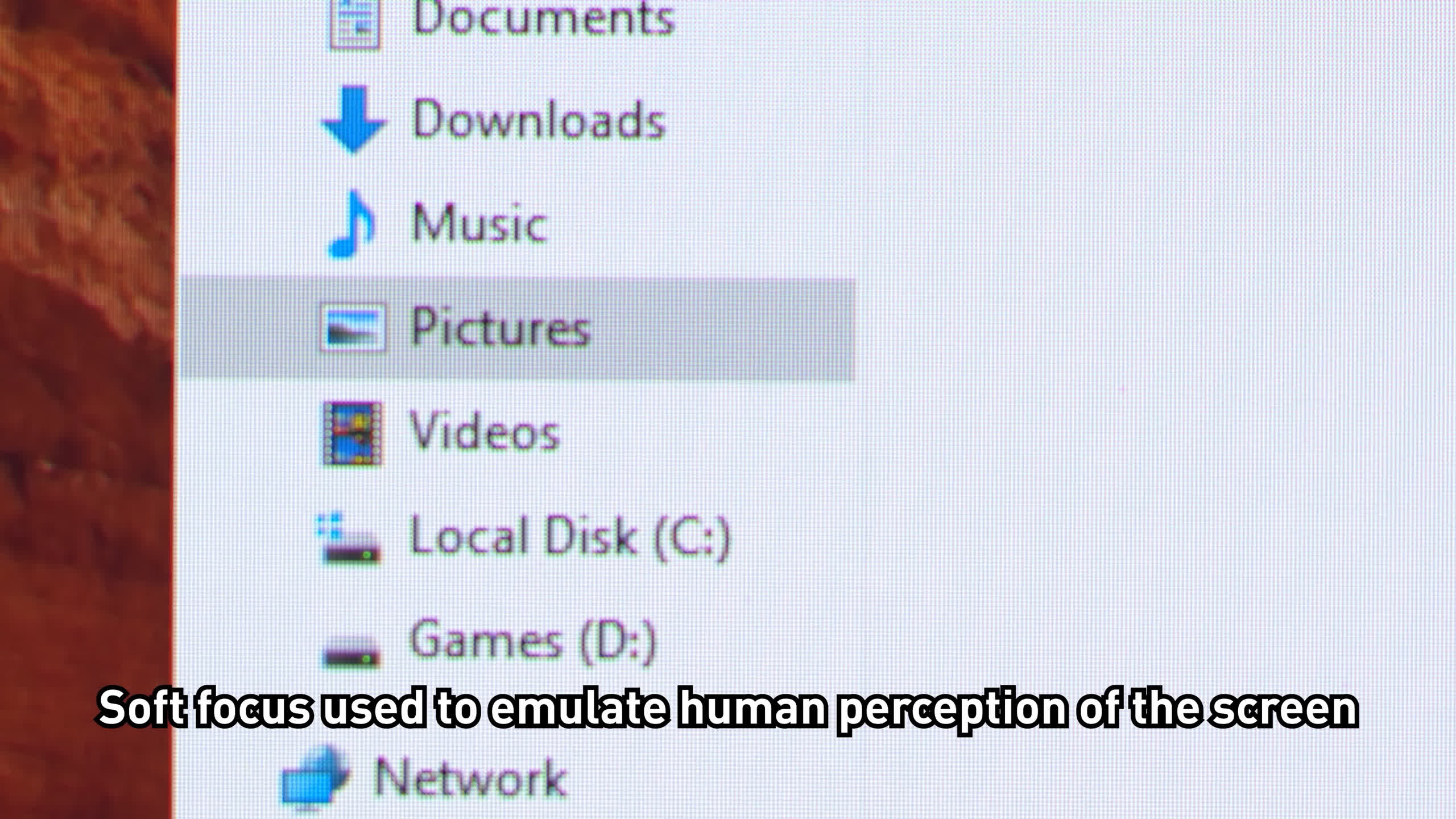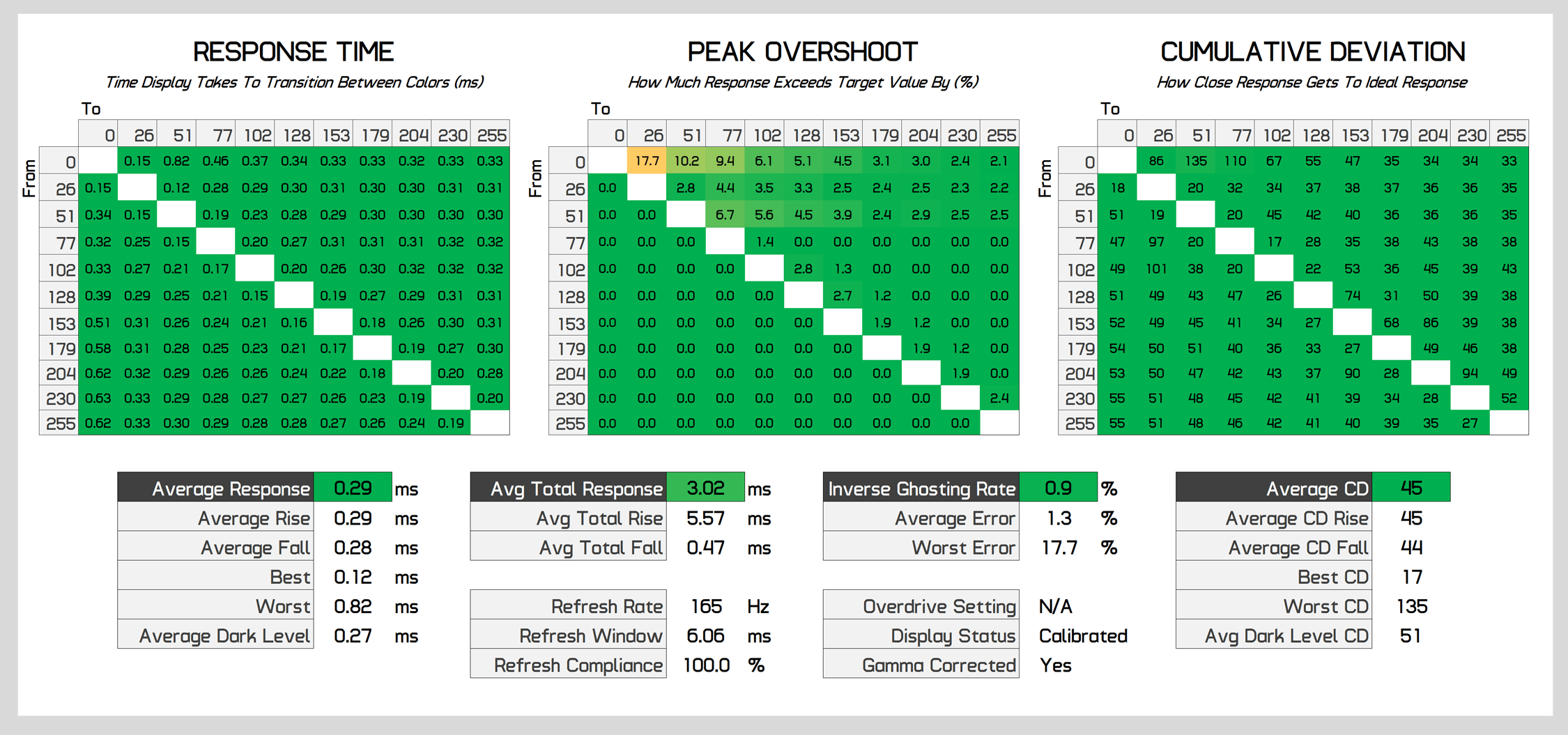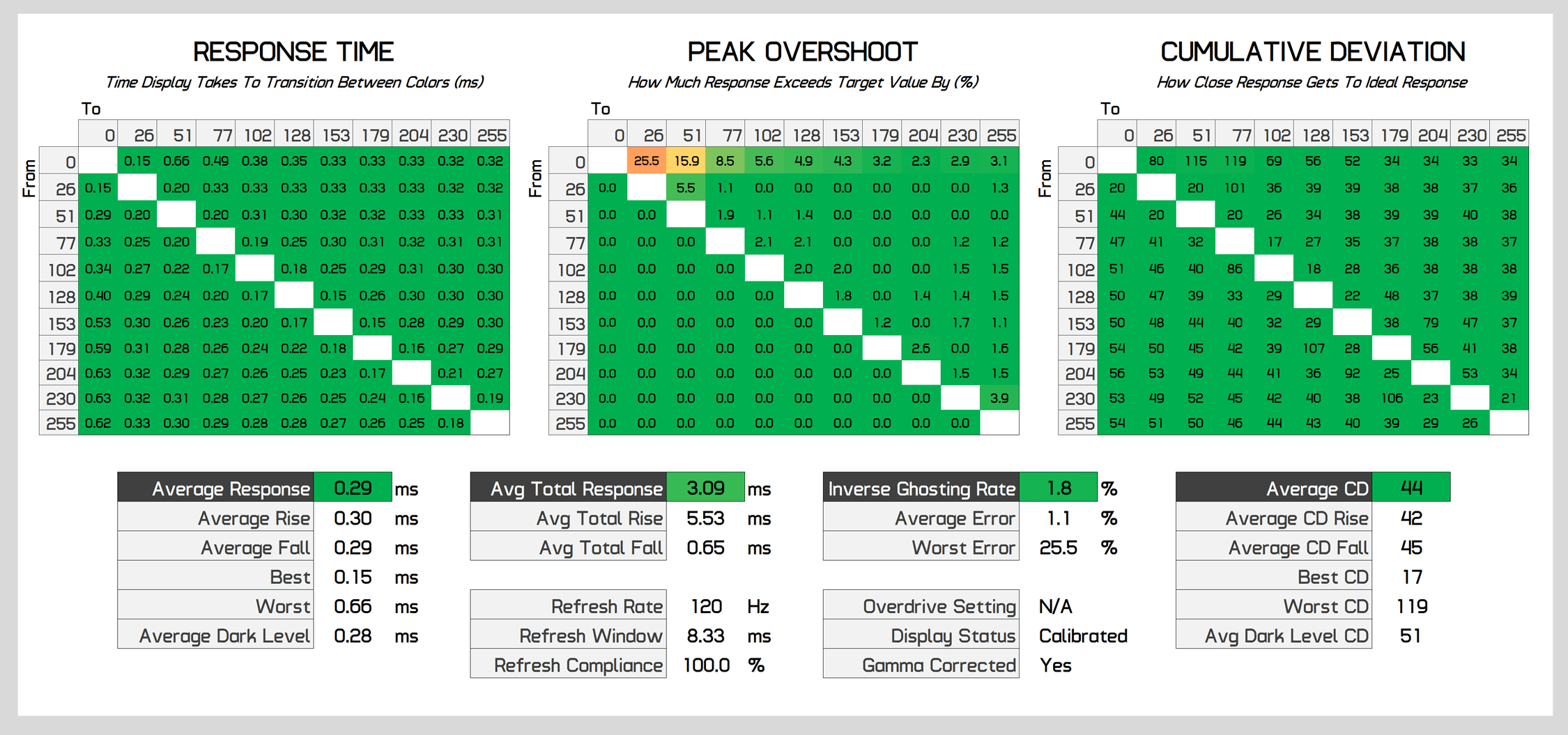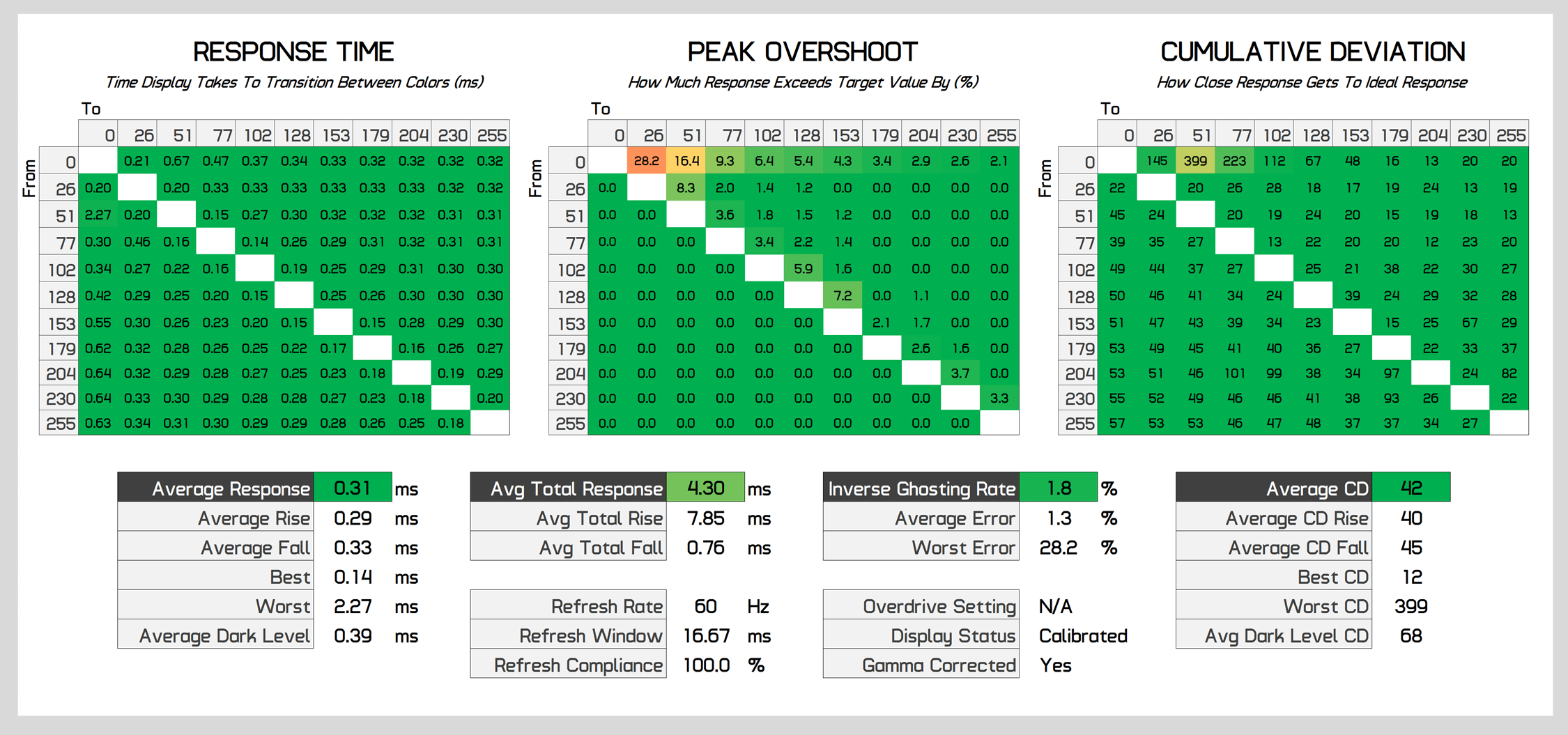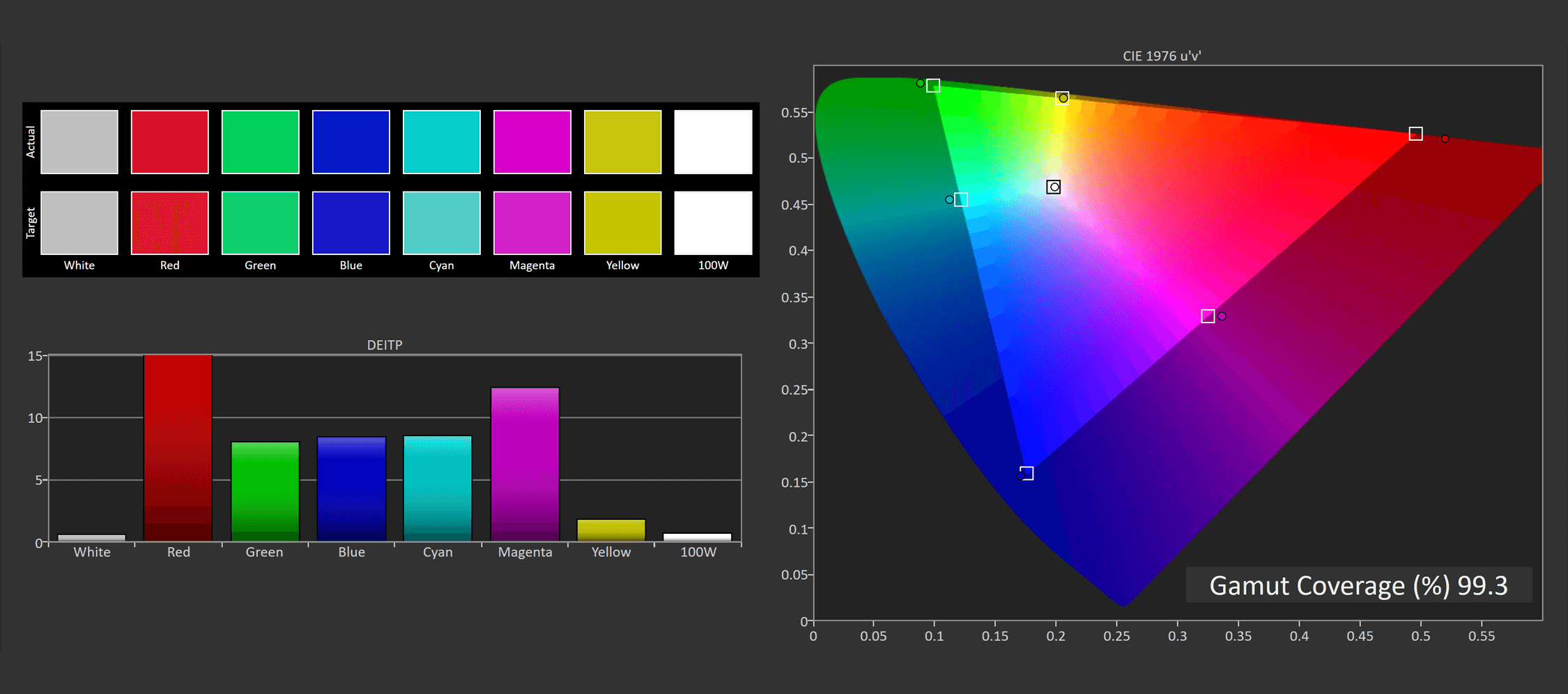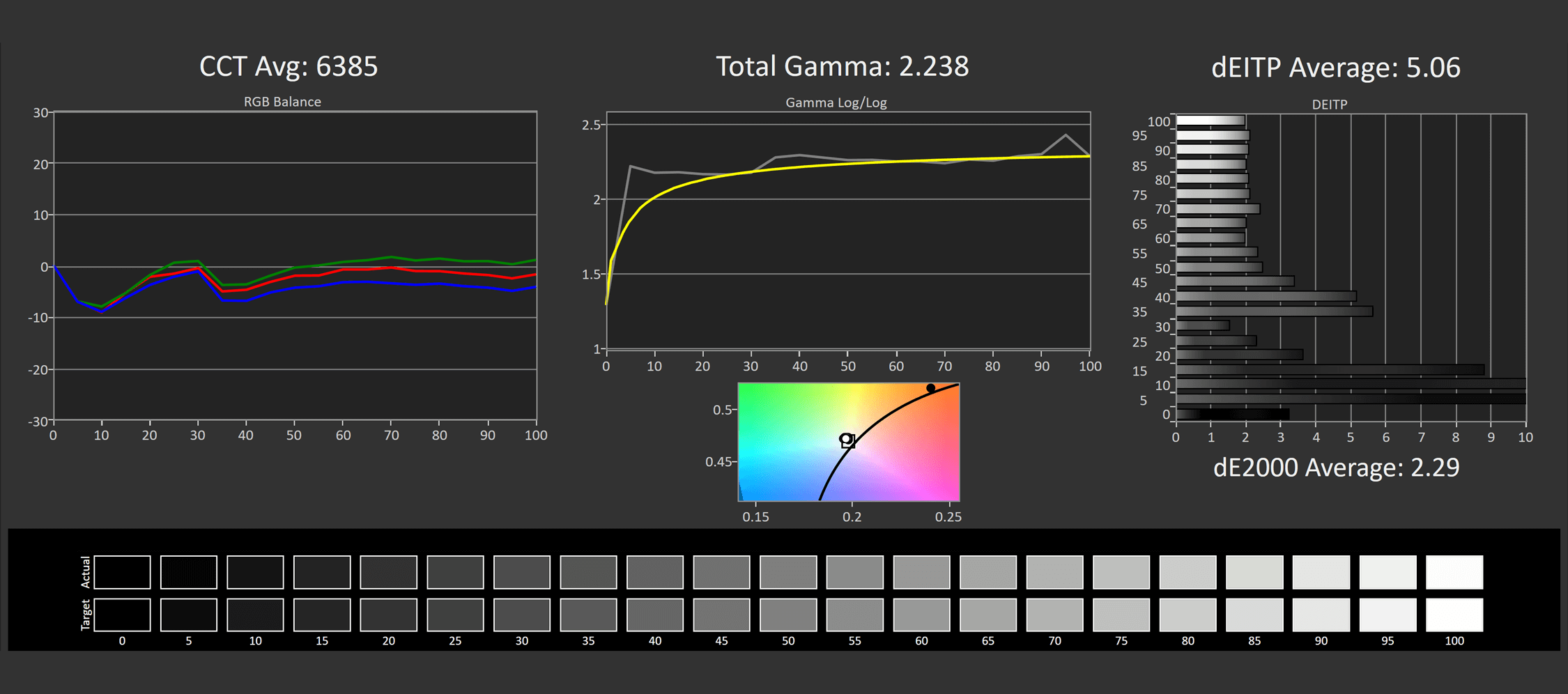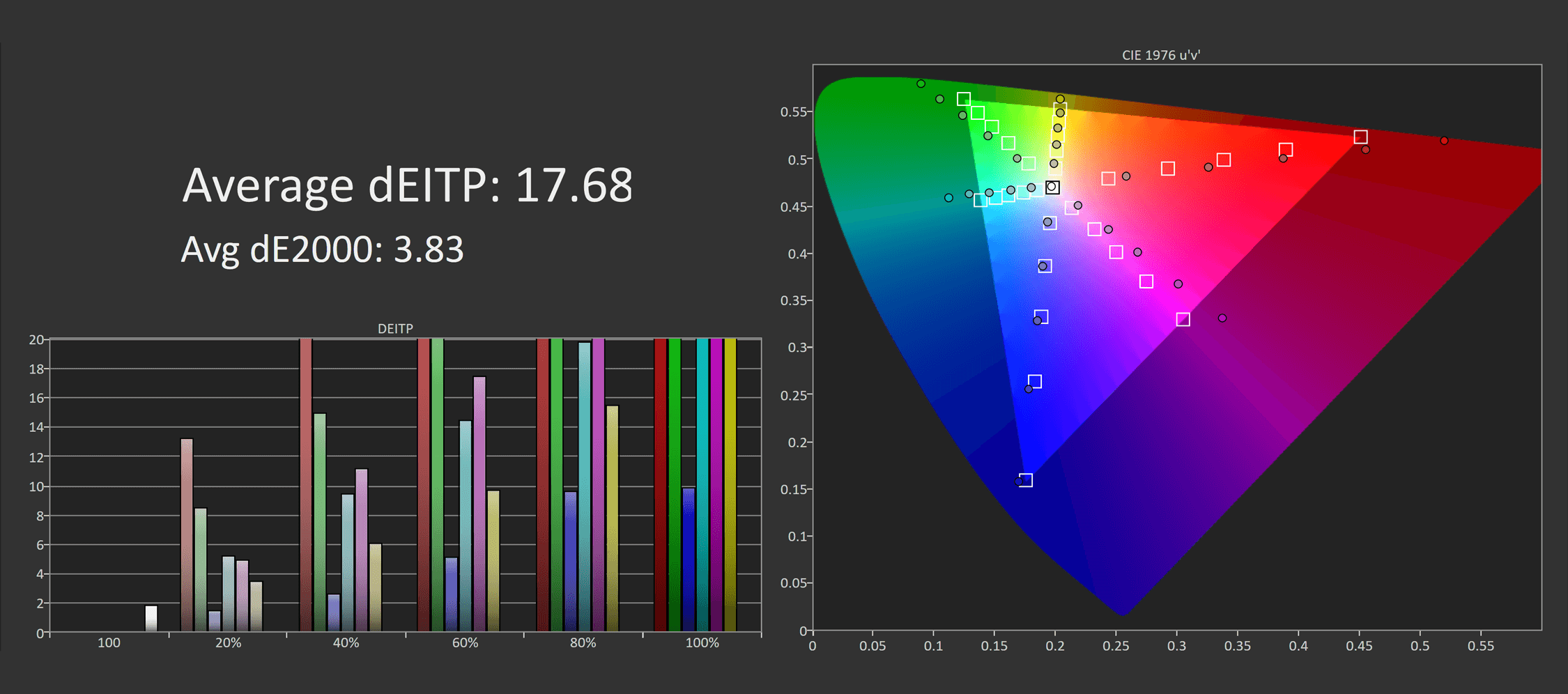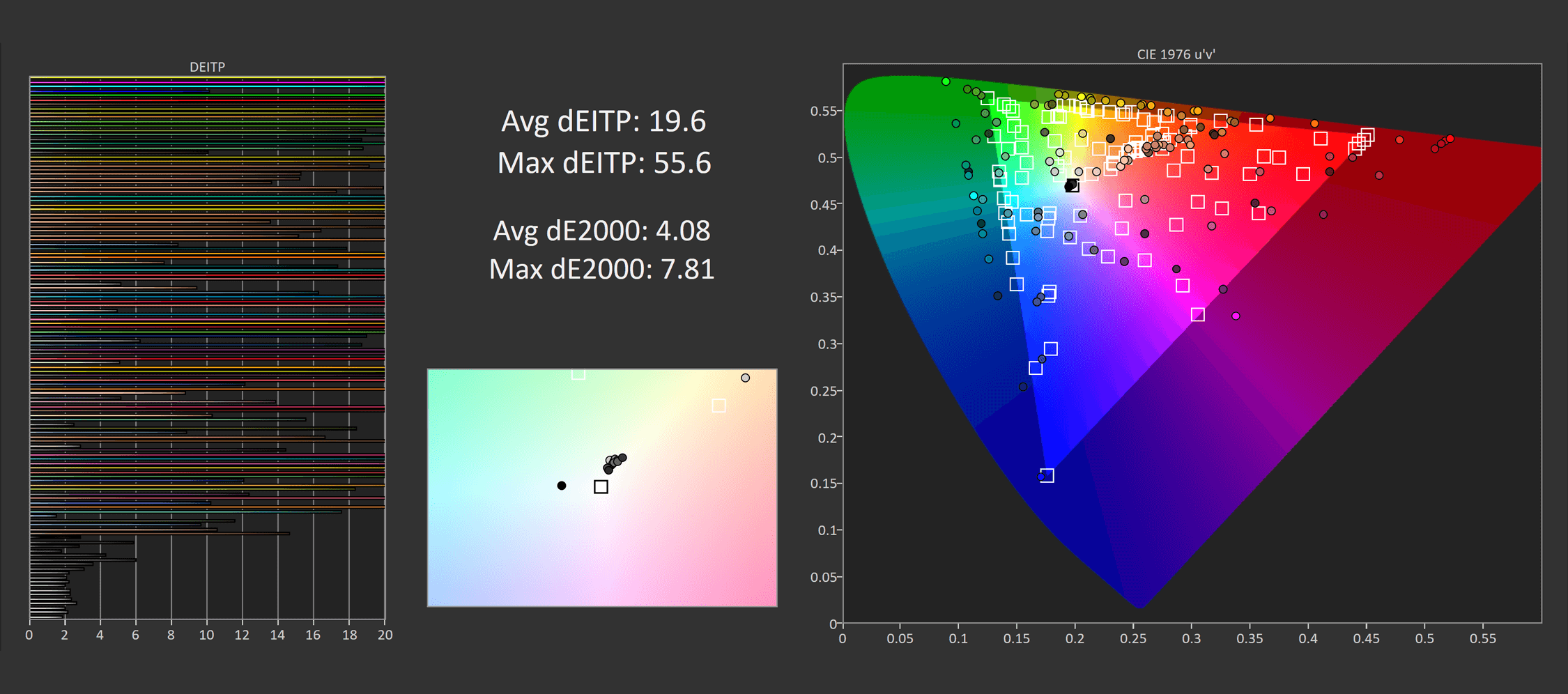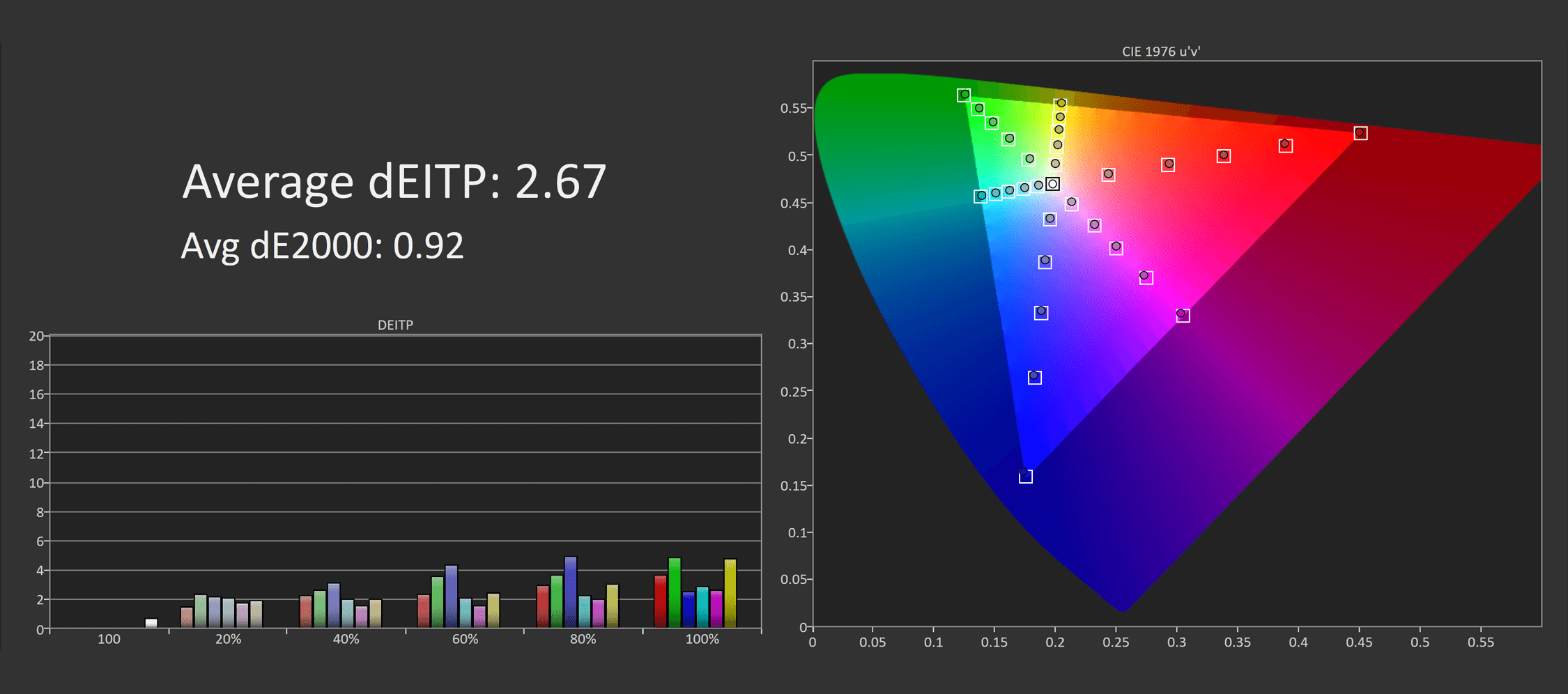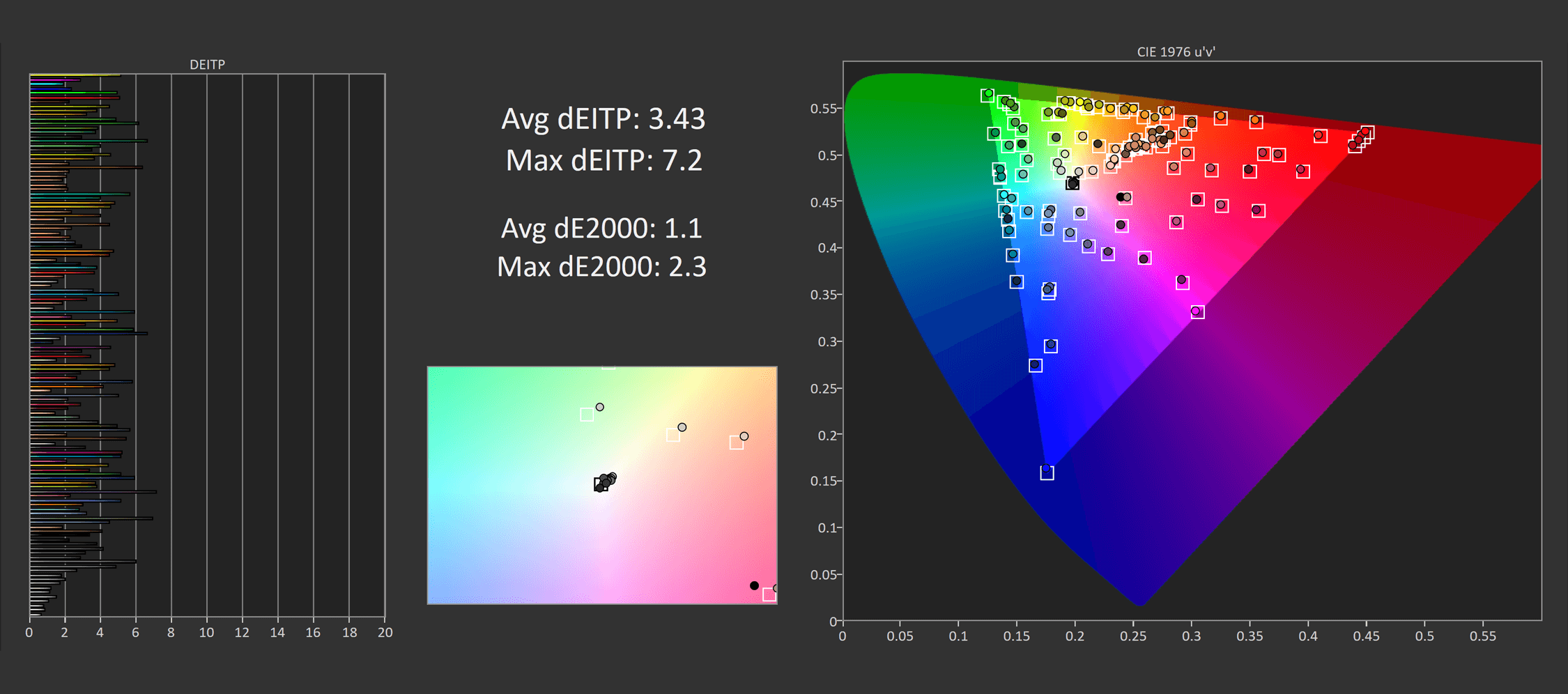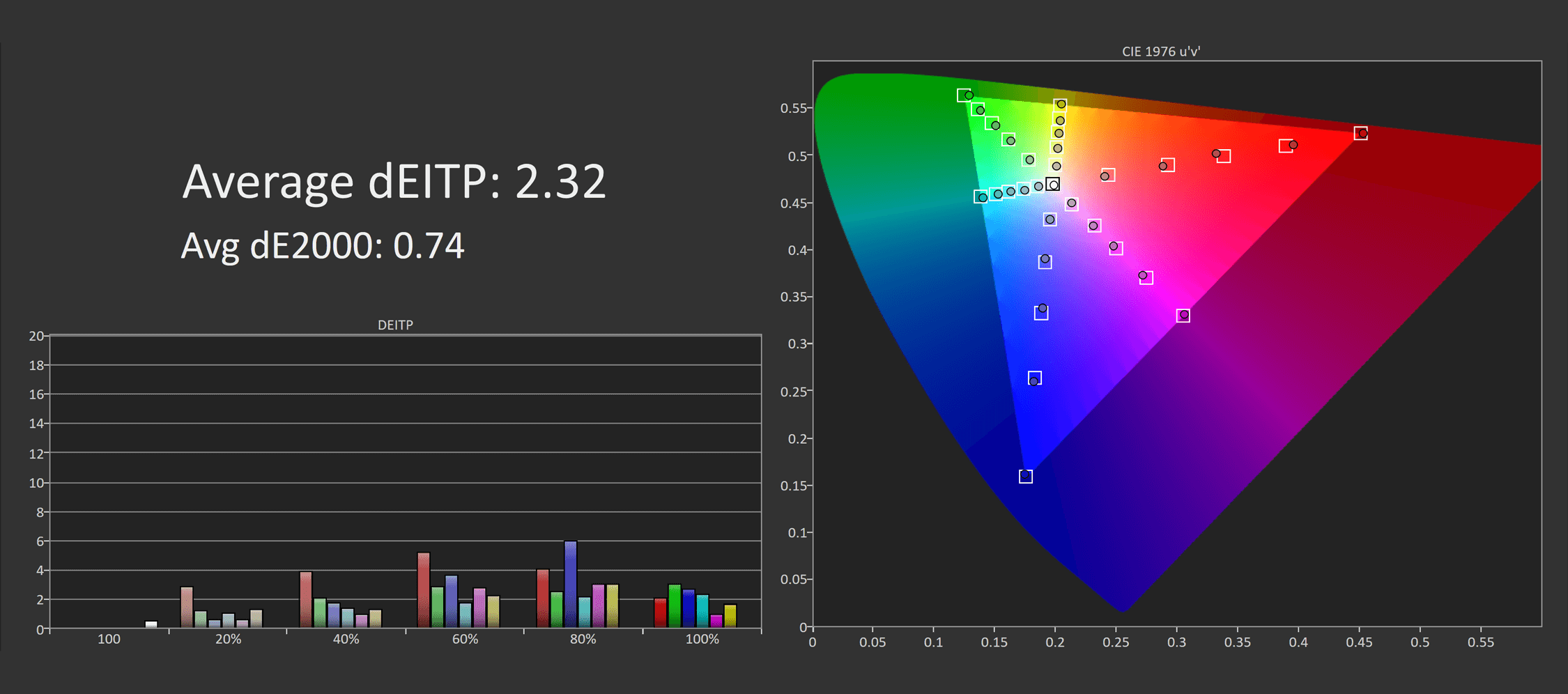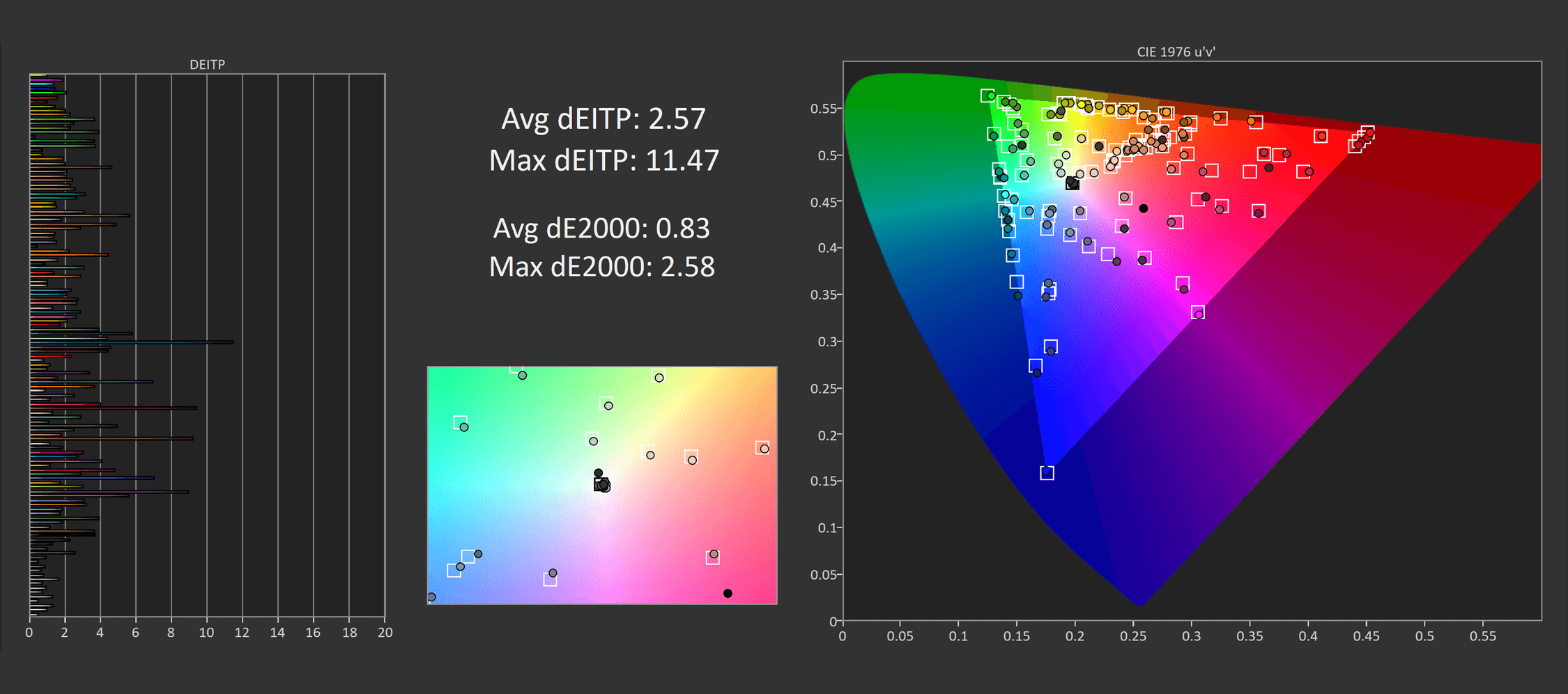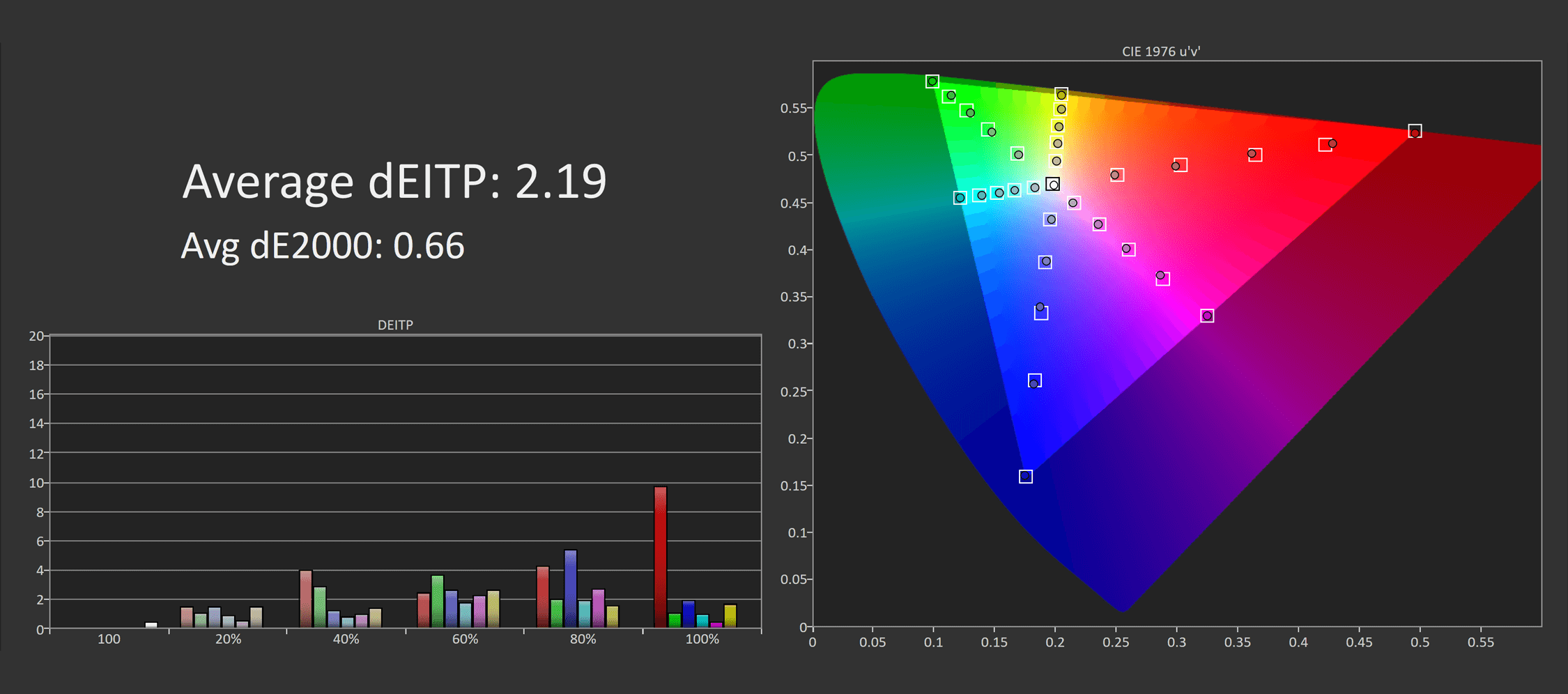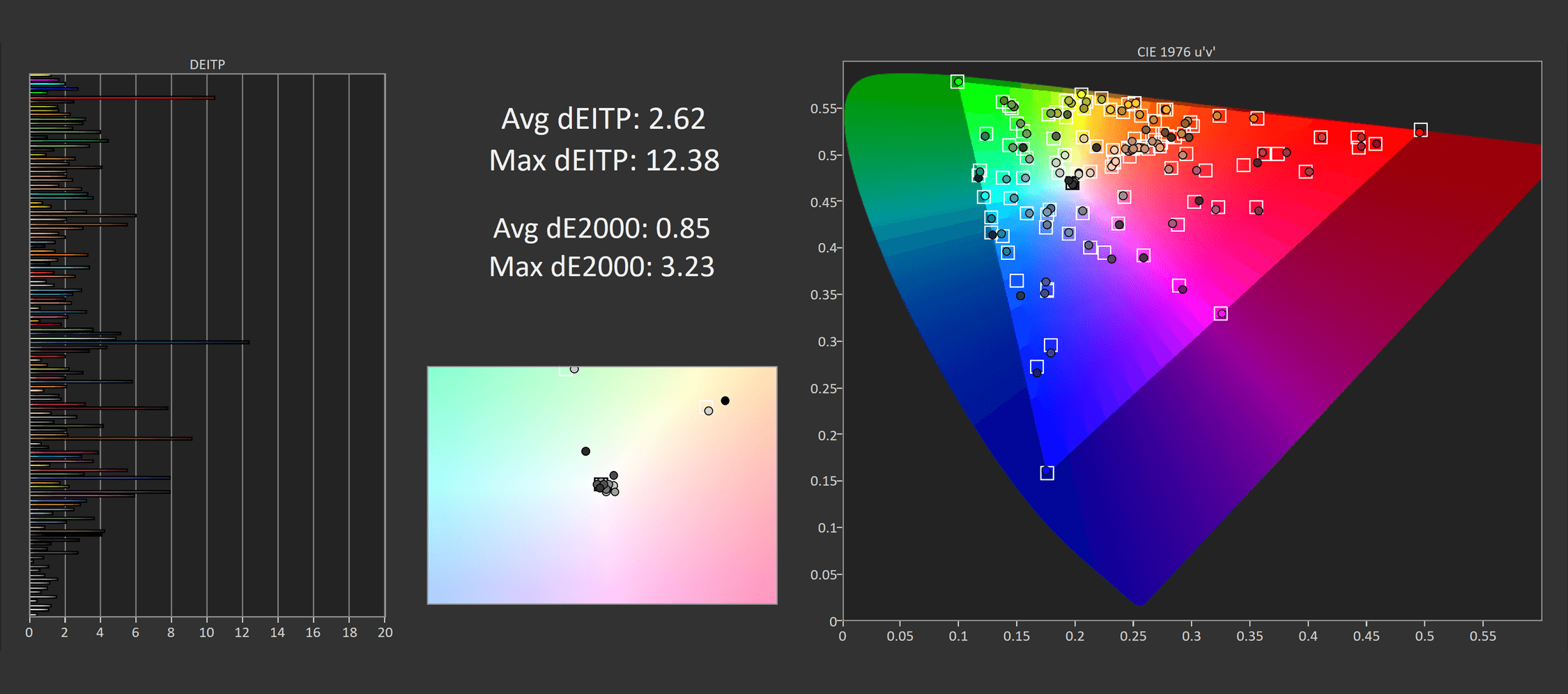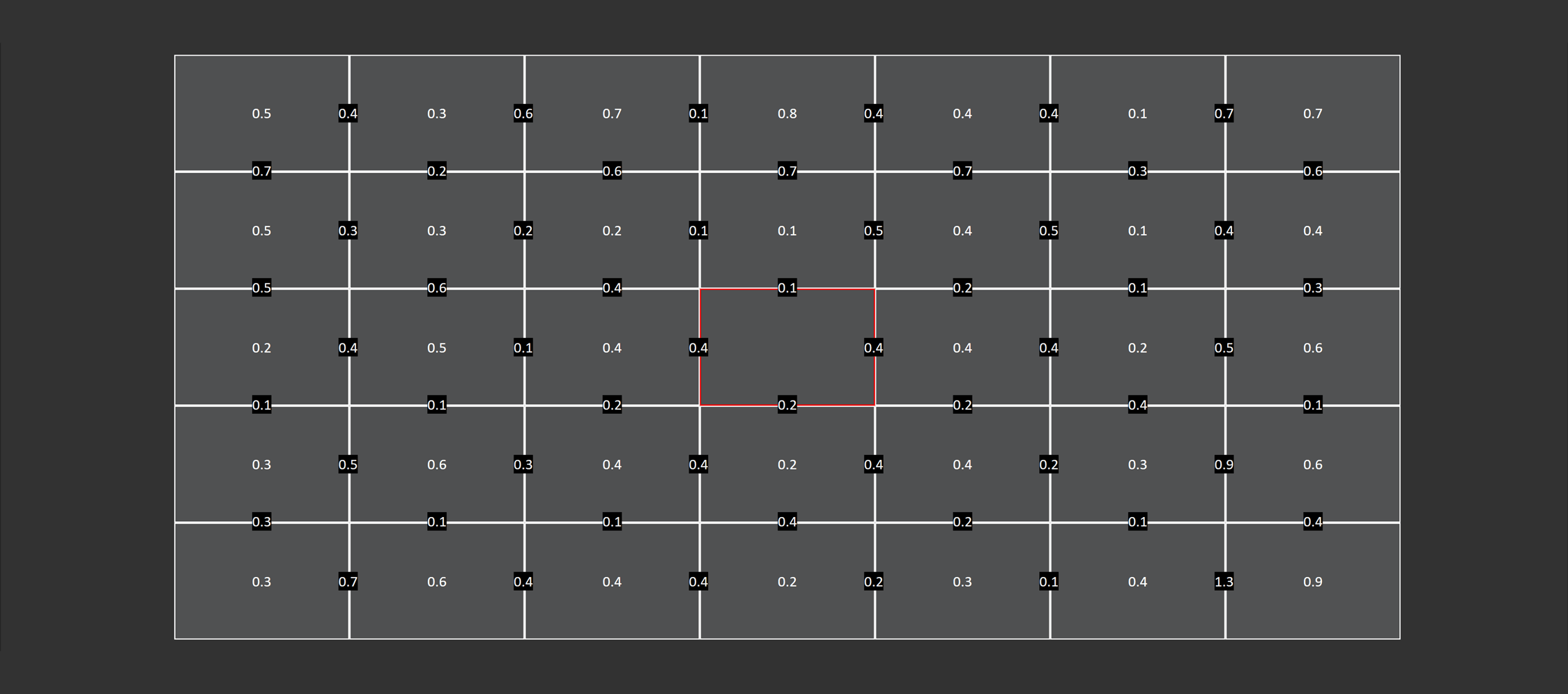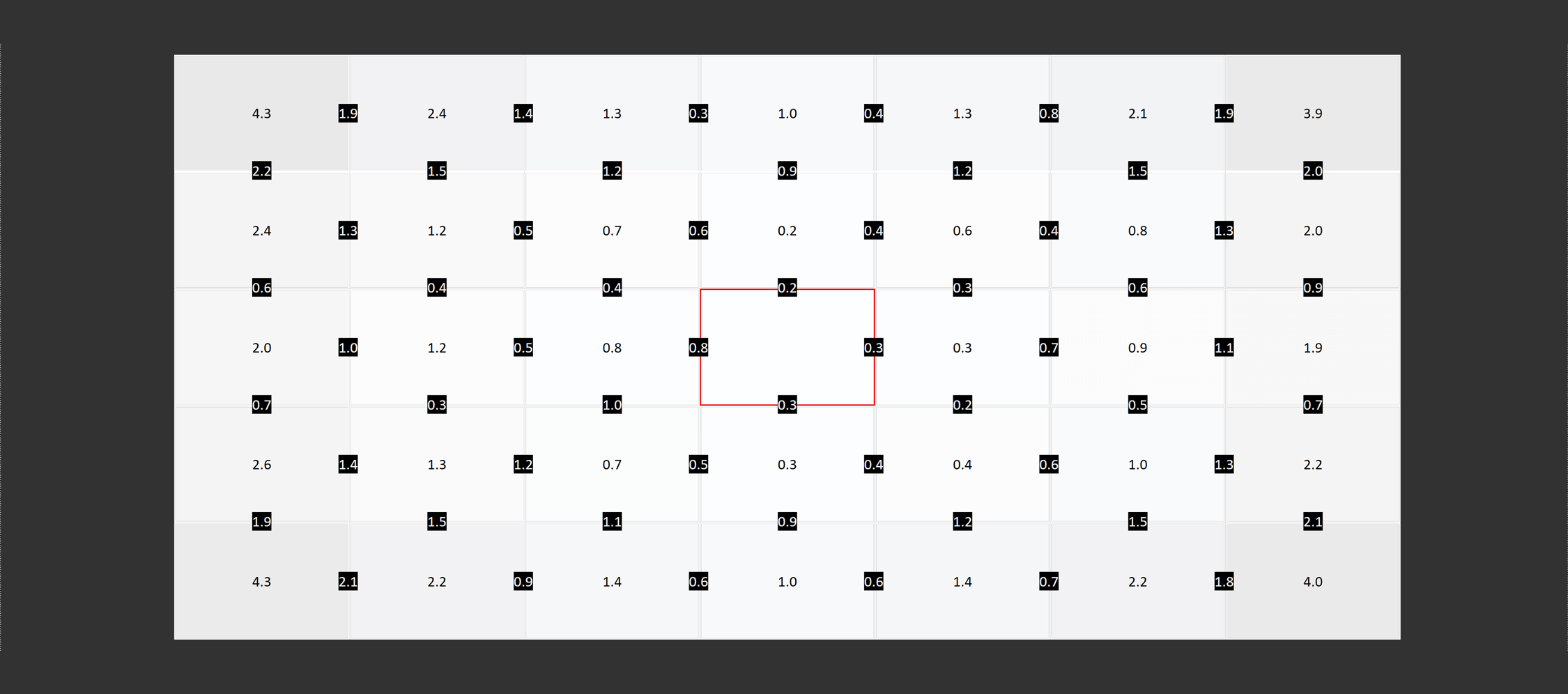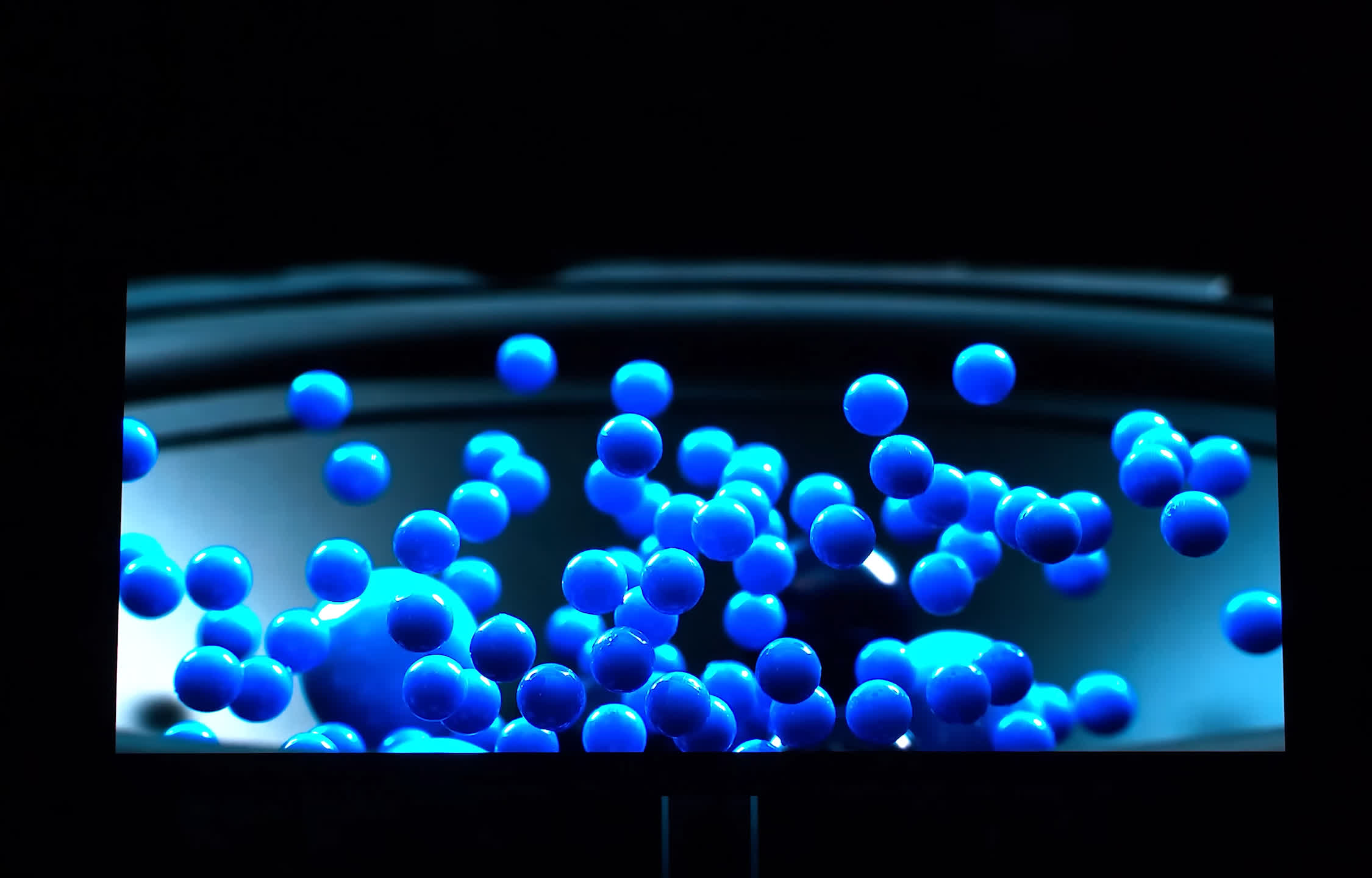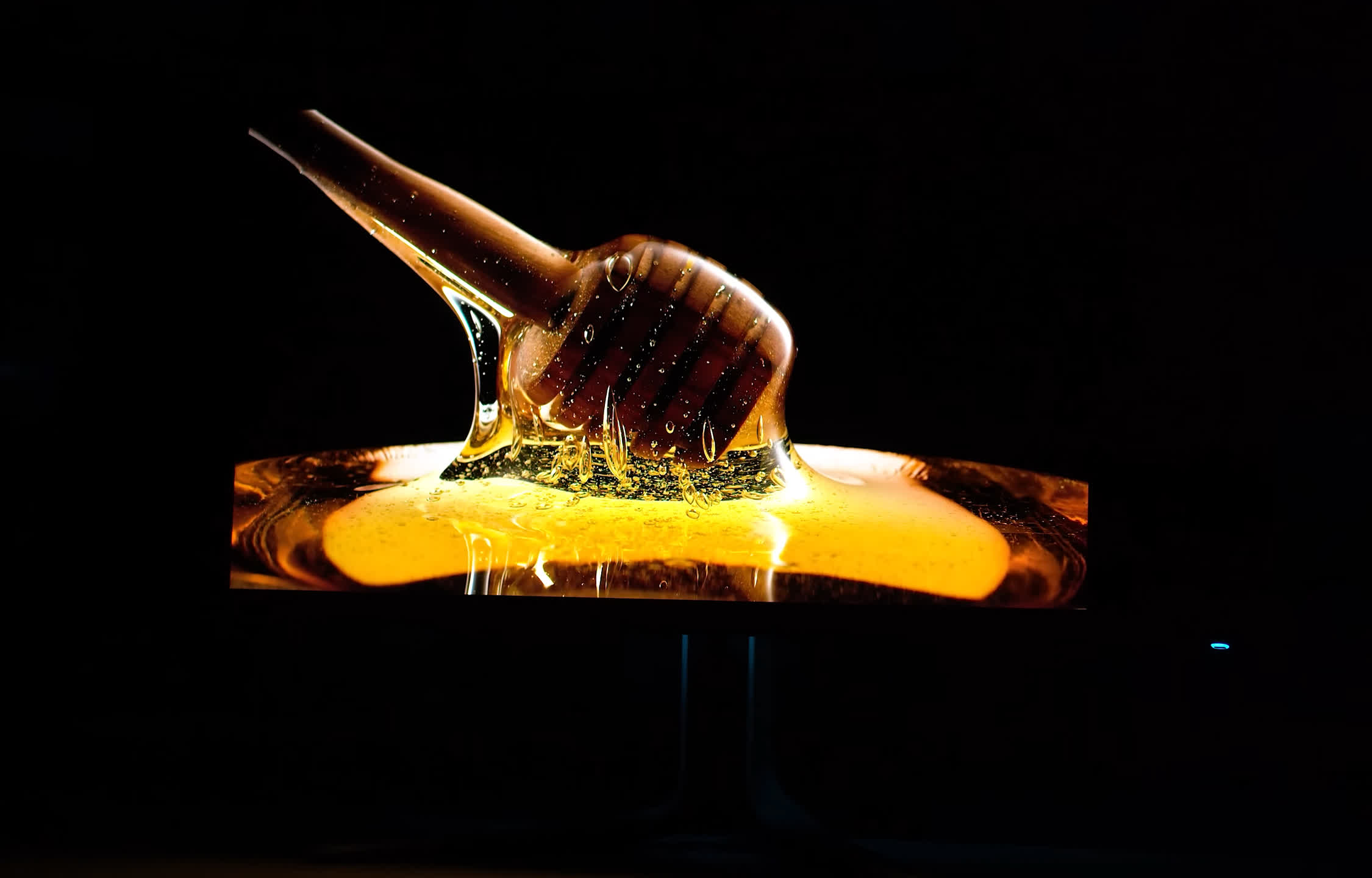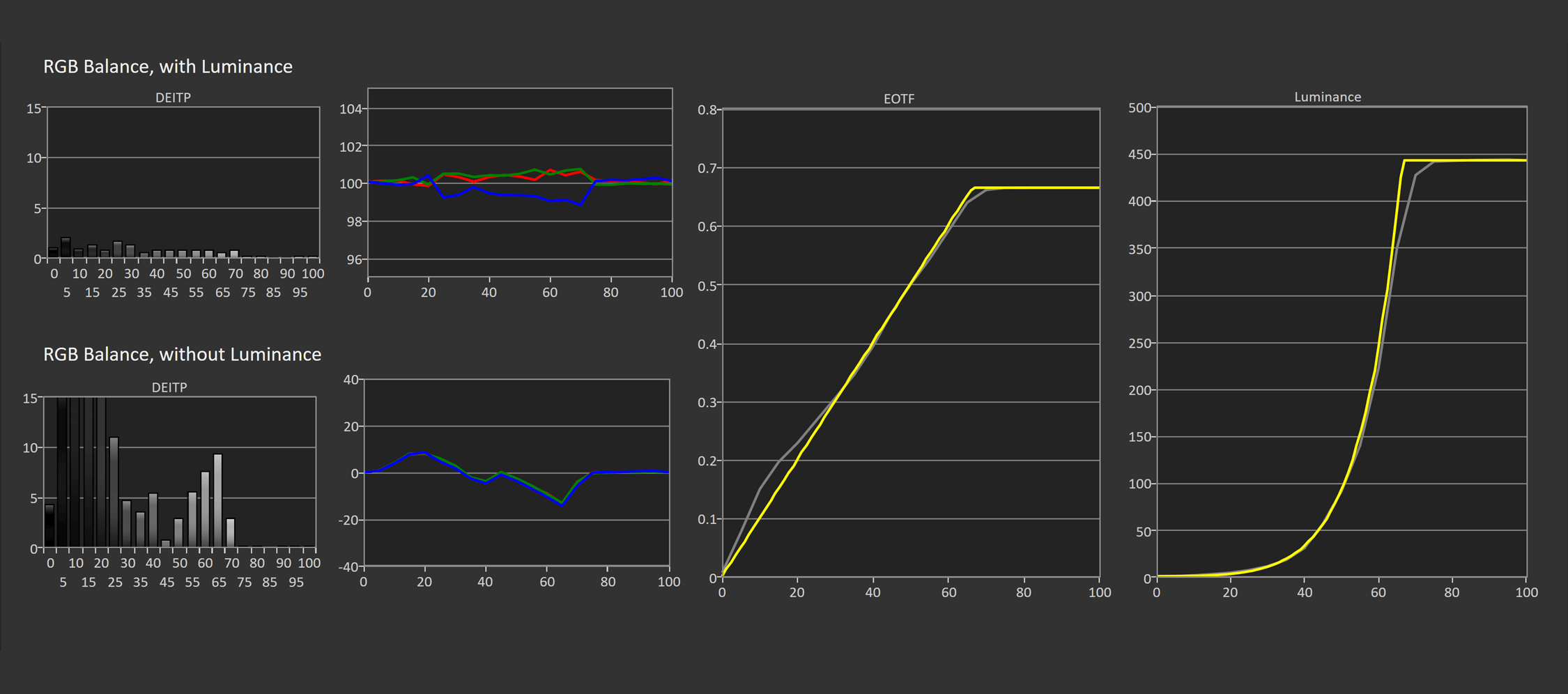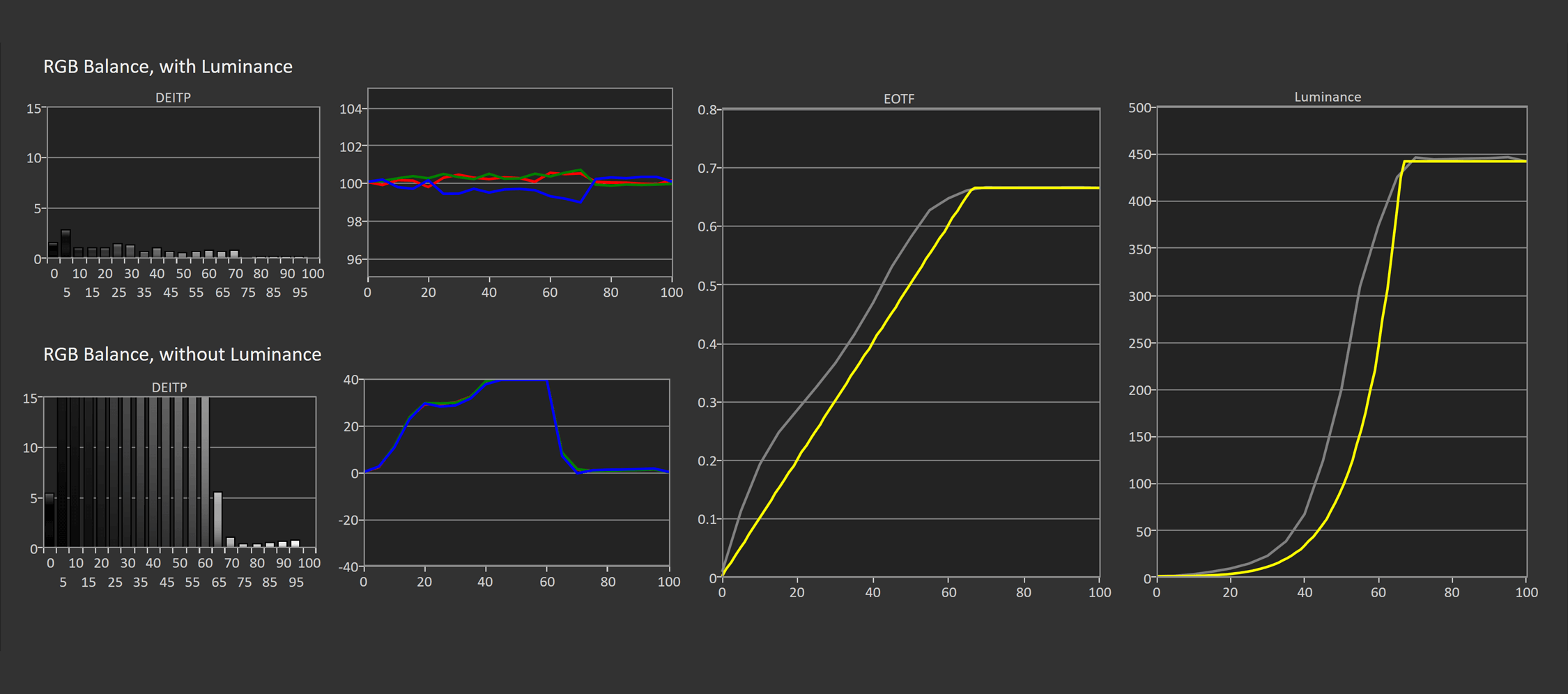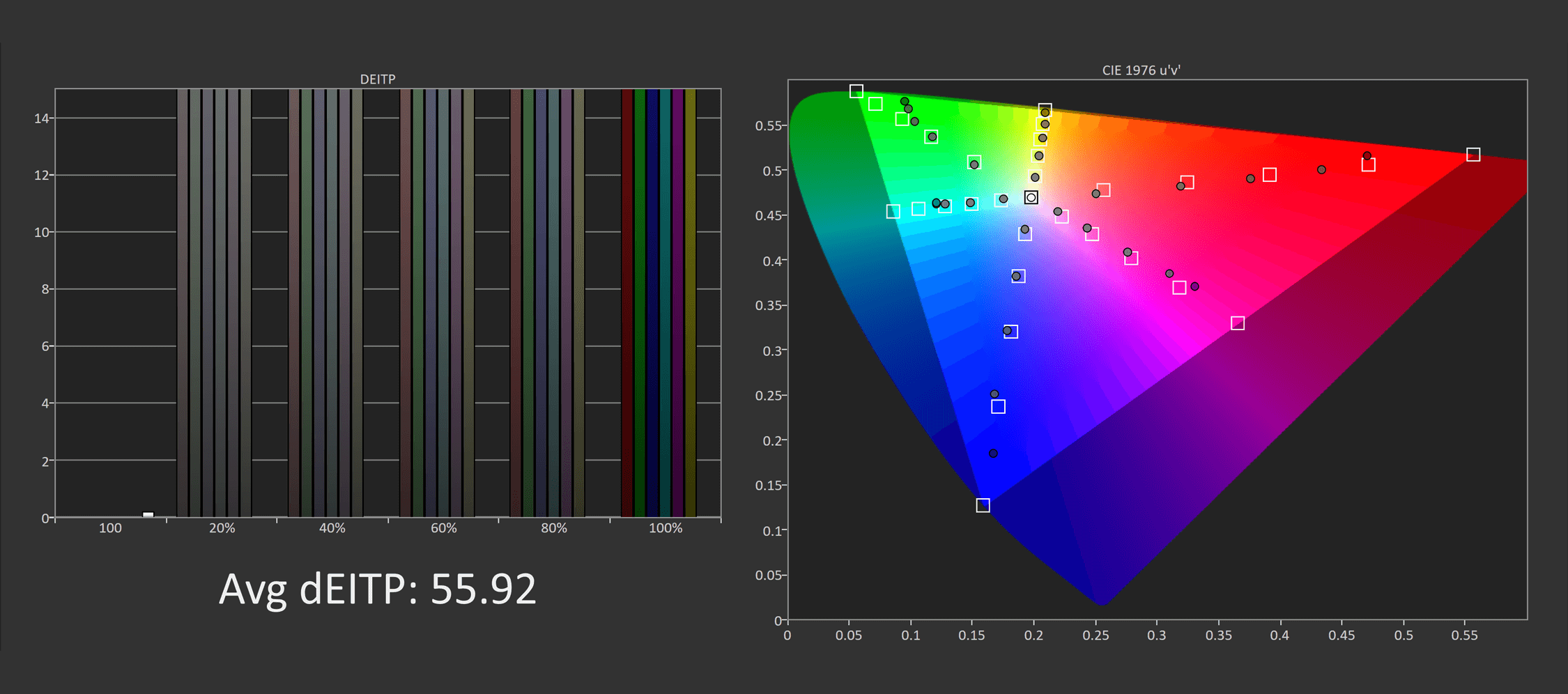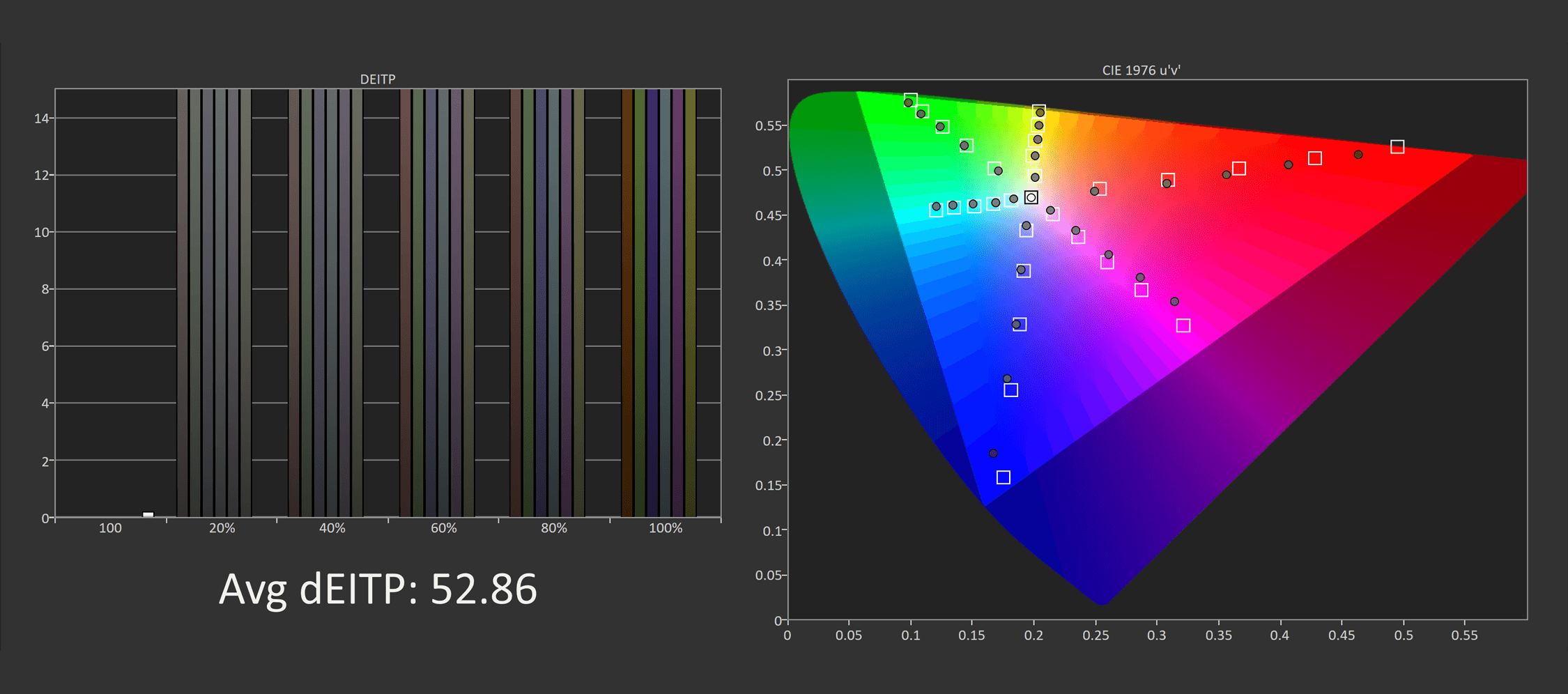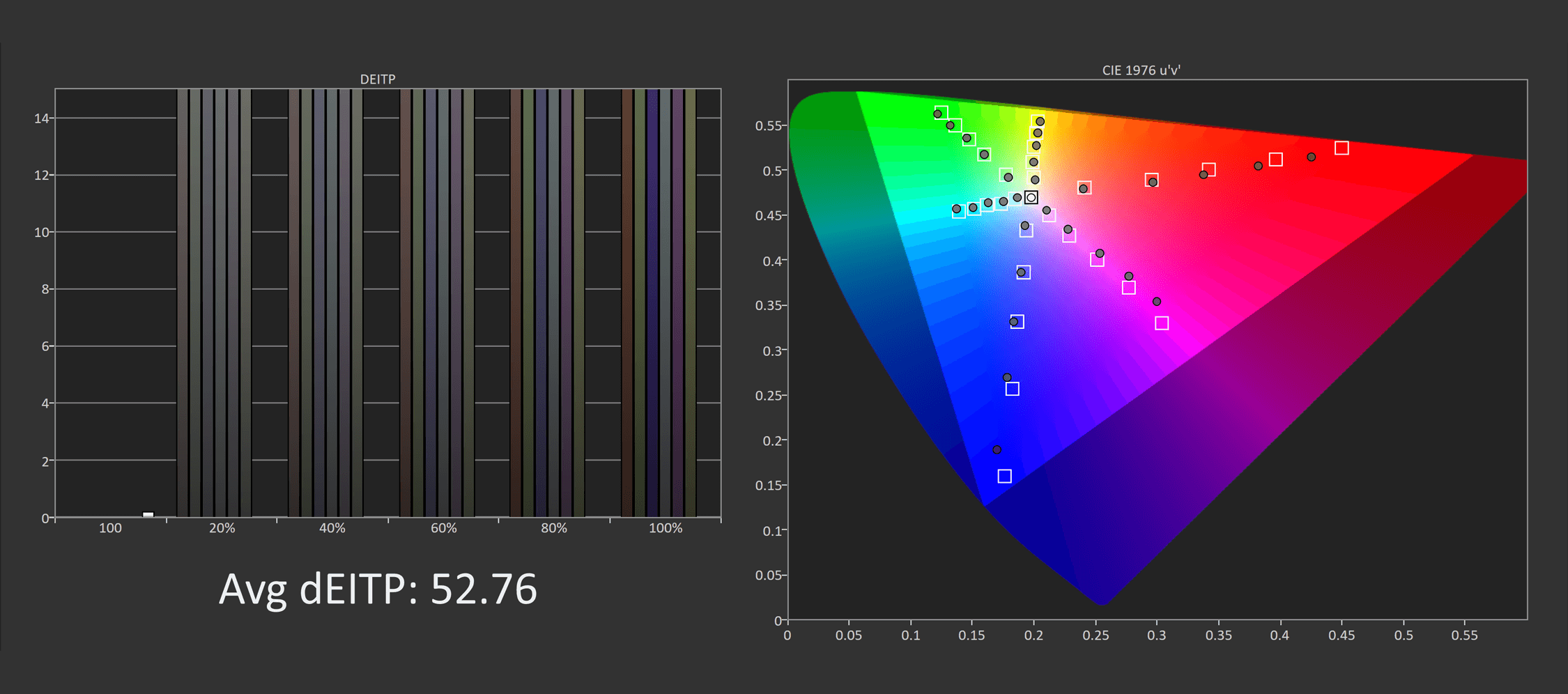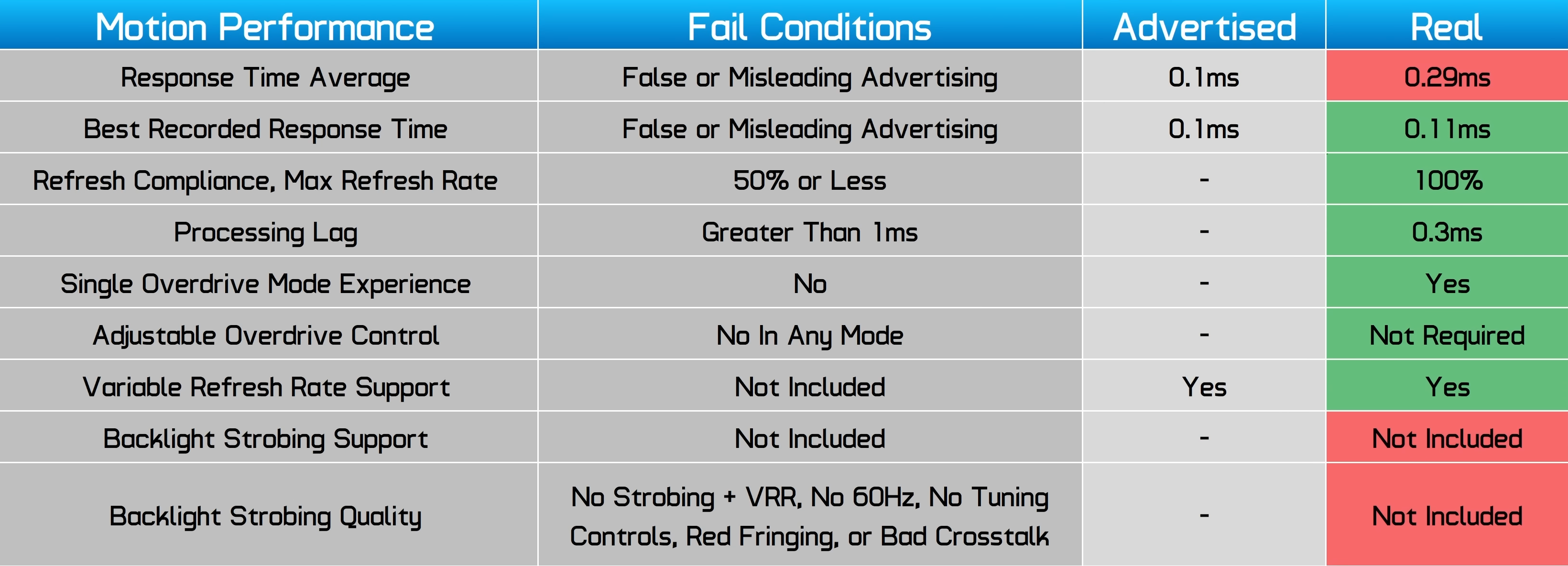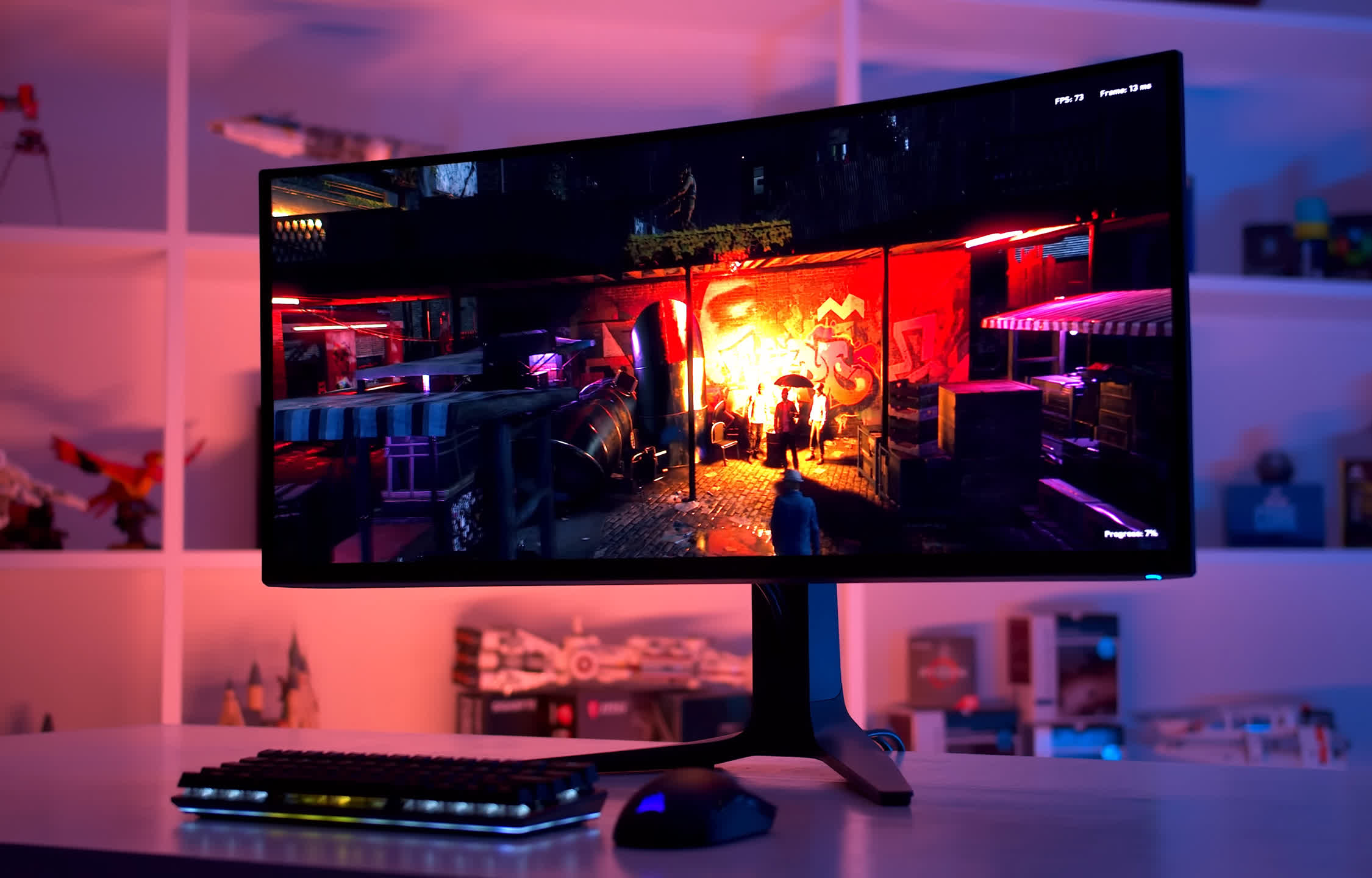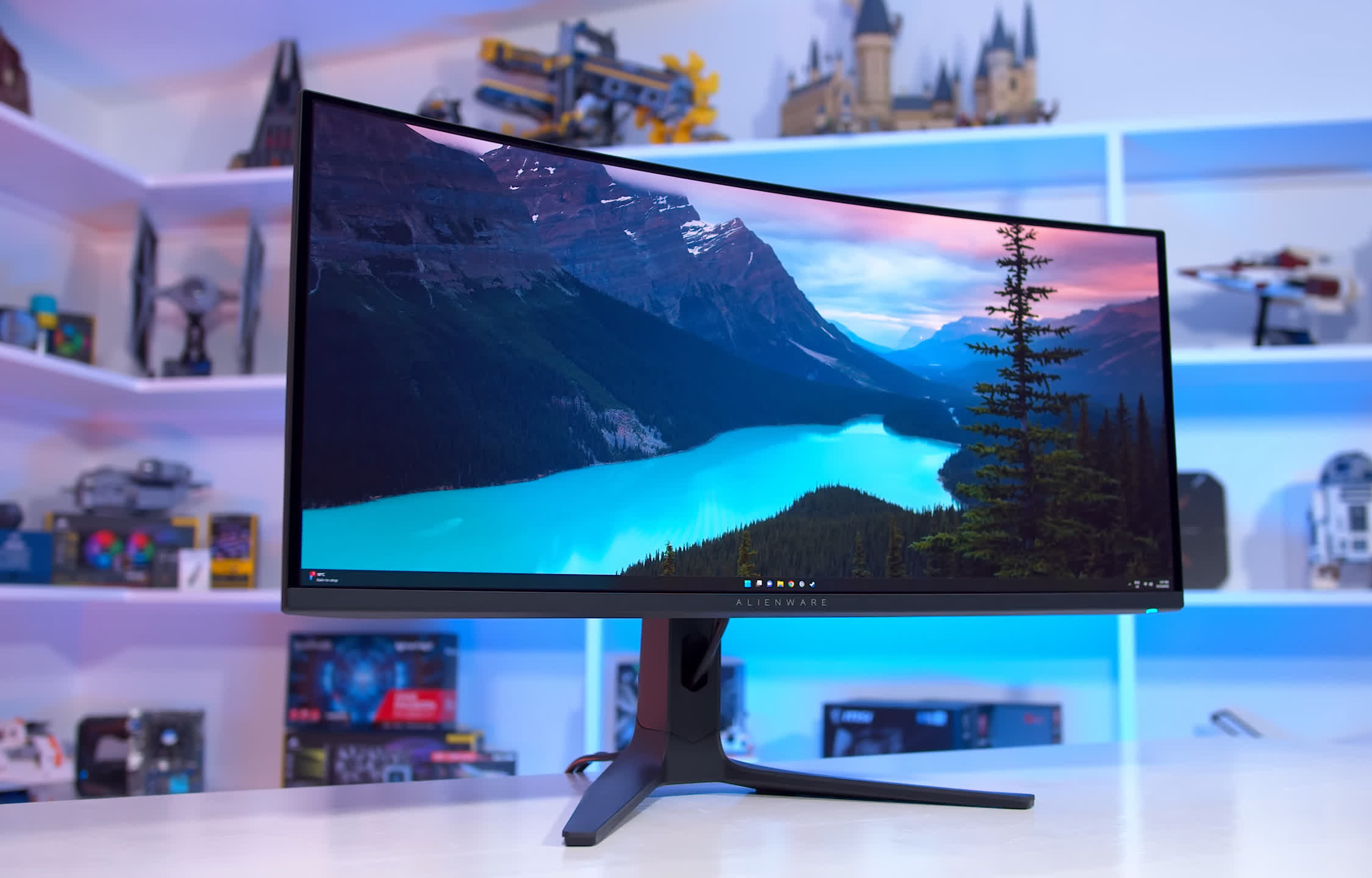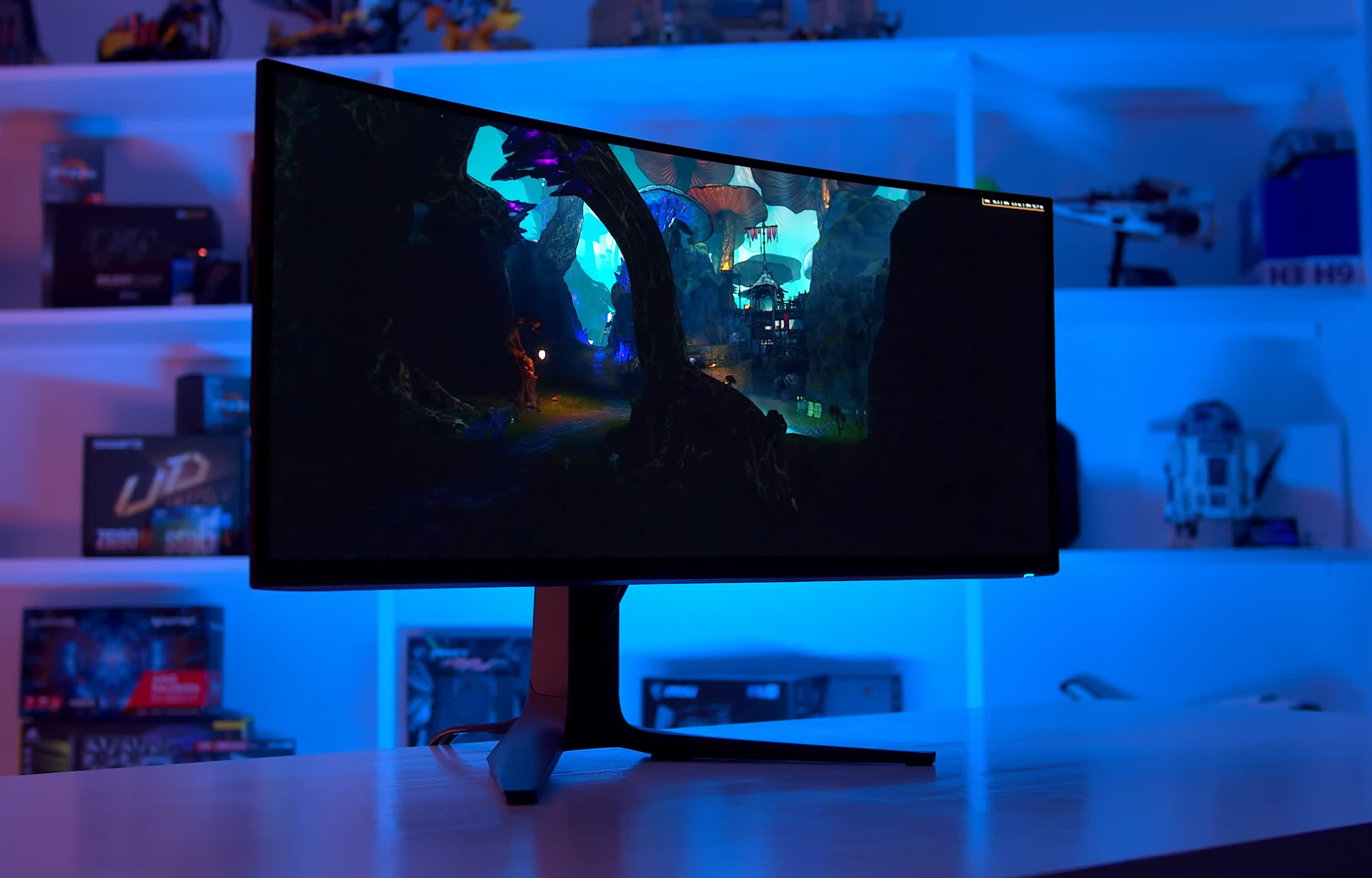The Dell Alienware AW3423DWF is a newer and lower cost variant of the AW3423DW we reviewed in early 2022. Considering that's one of the best gaming monitors you can buy right now, it's no surprise this variant (adds an "F" to the model name) has gathered a lot of attention as it's a more accessible way to get your hands on a QD-OLED ultrawide. But, there are a few additional interesting differences as well. So let's talk about this new DWF 34" model...
The base specs are very similar: it's the same 34-inch 3440 x 1440 QD-OLED ultrawide panel from Samsung with an 1800R curvature. Naturally, it's a true HDR product with DisplayHDR TrueBlack 400 certification, and it has rated 0.1ms response times.
On paper, the only main spec difference is a slight refresh rate decrease at 165Hz for the DWF vs 175Hz on the DW, though practically speaking this makes next to no difference while gaming as it's only a 6% reduction.
What makes the DWF more affordable is the removal of the Nvidia G-Sync module in favor of a more traditional scaler. This drops the price by $200 from $1,300 to $1,100, which is a typical price gap between a G-Sync and non-G-Sync product of otherwise the same hardware.
While the monitors are listed on Dell's website as the "AMD FreeSync Premium Pro" and "Nvidia G-Sync Ultimate" variants, either monitor works with adaptive sync tech from both brands, so the DWF variant works with both AMD and Nvidia GPUs despite being listed under FreeSync, just like how the DW also works with AMD and Nvidia GPUs despite being G-Sync branded and having the module.
It's not something to be concerned about, you don't need to pick a variant based on the GPU you have.
The 34" DWF brings a few other minor changes, including user upgradeable firmware which was a bit of an issue for early adopters of the AW3423DW - including ourselves - as the very first batch of units did have a few firmware bugs such as standby issues and the OLED panel care features activating at suboptimal times.
With this review we also have the opportunity to see if there's any performance differences in areas like input latency, calibration and response times which may change since the scaler has been swapped.
This review is intended to be a complement to our original AW3423DW review, so we'd strongly recommend checking that out for the full picture on what this display can offer. Areas which are the same between both monitors will be covered in more depth in the AW3423DW review; the primary goal here is to see if there are any differences between the DW and DWF models and how that affects your potential buying decision.
Design and Looks
From a design standpoint the DWF model is identical to the DW except with all of the white panels swapped for black. We guess you could call this the "stealth" version as a result, and honestly we prefer the way the black model looks compared to the original two-tone design.
There's also a difference in RGB lighting effects on the rear, the DW has a light ring around the stand connection but no RGB for the large 34 text; it's the opposite on this DWF variant where there's no light ring but the 34 has RGB lighting. The DW also has a light bar near the OSD toggle which the cheaper DWF doesn't have. Not a big deal either way as otherwise they look pretty similar.
That's good news because the AW3423DW is a well-built display and that also applies here, it definitely looks and feels like a premium product despite many of the surfaces being plastic. The stand is reasonably sturdy, it supports height, tilt and swivel adjustment and honestly we think it looks great.
One of the more contentious aspects to the DW was its active cooling. While switched on, and even during standby, the DW produced audible fan noise. Active cooling has been a part of G-Sync module displays for a while now as a fan is required to cool the module, with varying results on how audible the fan noise is. The DW was on the worse end of the scale as the fan could be heard in a quiet room, though typically not over game audio.
The DWF still includes active cooling, however the fan is much quieter to the point where I didn't notice it in a quiet room from a reasonable viewing distance. It was only when I put my ear right up to the top vents where I could hear the fan and feel some air movement.
The DWF has further benefits: the fan noise doesn't appear to change, unlike the DW where the fan ramps up and slows down at times, which makes it harder to blend into background noise. The DWF also seems to fully switch off the fan in standby, whereas the DW model still runs the fan at times when in standby and your PC is off. There is no doubting whatsoever the DWF model has better tuned cooling and is the better product for silent PC enthusiasts.
However, the issues with port selection remain between the two models. We're only getting DisplayPort 1.4 and HDMI 2.0 here. The DP 1.4 port doesn't use DSC, so it's limited to 8-bit 165Hz with 10-bit only at lower refresh rates, not a huge deal though.
The bigger issue is that the DWF still doesn't use HDMI 2.1, so it's only capable of 100Hz over HDMI 2.0. HDMI 2.0 is a limitation of the G-Sync module, but this wasn't resolved when the scaler was swapped.
As for the OSD, it's easy to navigate thanks to a directional toggle, and includes all the usual color and game features. Interestingly, the DWF has more features, including cheat crosshairs and something called "console mode" which gives you the option of source tone mapping on supported input devices.
Obviously, user upgradeable firmware is a huge plus, too, as any issues discovered with how the DWF operates can actually be fixed without an RMA, unlike with the DW.
In our AW3423DW review we spent extensive time covering the screen coating and subpixel structure of the QD-OLED panel. As the AW3423DWF uses the exact same panel, the same issues are present here. So the sections on these problems from our initial review hold true and we recommend checking that review for our in depth findings.
But to summarize... the QD-OLED panel's coating is glossy and lacks a polarizer, so it can reflect quite a bit of ambient light, depending on the conditions. In a standard indoor viewing environment with artificial light, or in a sunlit room, blacks can appear grey or raised due to some of this light being reflected off the panel. This is unlike an LG OLED which appears much blacker even with ambient light in the room.
This ambient reflectivity is exacerbated when there's more light in front of the panel, but isn't as problematic when lighting is only behind the display, and it's a non issue in dimly lit or dark rooms.
This can hamper the rich OLED experience in some viewing conditions: OLEDs are famous for their black levels, but with the AW3423DWF you'll need to have an optimized setup to get the most out of it.
The subpixel structure is also not ideal for desktop productivity use. The QD-OLED panel uses a triangle RGB layout instead of the traditional RGB stripe, which can cause fringing on high contrast edges such as text. This is not easily fixable with software corrections. Some people don't notice this issue, but others including myself found it reasonably obvious, especially next to a normal LCD. This reduces the crispness and clarity of text in some situations, but is a non-issue for content consumption, gaming, or watching videos.
Standard OLED issues are also present, including the risk of permanent burn in, which doesn't make this a good candidate for productivity work where static images may be displayed on screen for long periods of time. QD-OLED is supposedly less susceptible to burn in than other OLED panel types, and Dell does offer a 3 year burn in warranty, but it's still unclear how these panels will be affected over the next few years. There is a risk and it's important to be aware of that.
Display Performance
In terms of motion performance, there is no difference between the DW and DWF. The only difference you are seeing in these results compared to what we showed in our AW3423DW review is that we've since fixed an issue with our test tools and their ability to test OLED screens.
This has improved recorded OLED performance, but it's important to note there is no actual difference between this display and the DW - we retested the older model and it's roughly the same.
We're seeing about a 0.3ms response time for the DWF which is very fast and that continues to give OLED a huge advantage compared to an LCD of the same refresh rate. Overshoot is negligible and performance is held across the entire refresh rate range so there's no difference in performance whether you're at 165Hz or 60Hz. This is excellent and delivers motion clarity that rivals 240Hz LCDs.
There's no difference between the DW and DWF in response times, and also no difference to the LG C2 OLED and other monitors using that family of panels. The gap to LCDs is rather large, with the fastest I've tested coming in around 2ms, compared to 0.3ms here. Other HDR capable displays tested at their best refresh rate like the Odyssey Neo G8 and Cooler Master GP27U are varying degrees of slower.
OLEDs are able to extend their lead looking at average performance, because unlike most LCDs, there's no difference in performance at any refresh rate. This gives OLEDs somewhere in the range of 10x faster response times on average compared to a good quality LCD, so if motion is king for you, there's no better choice. You'll see similar in average cumulative deviation where there is a huge advantage in favor of OLEDs like the DWF, but no difference comparing the DW to DWF. Fixed refresh rate performance is also excellent and unchanged with the new model.
What has changed is input lag. Previously the DW model with the G-Sync module had mediocre input lag of around 5ms, which is higher than many other displays. With the new DWF model that ditches the G-Sync module in favor of a traditional scaler, that's brought input lag well down and it now sits at a 0.3ms processing delay which is typical of a modern gaming monitor. This leads to lower total input lag that again rivals some of the fastest displays on the market, simply because the response times on offer here are so fast it's ridiculous.
And in good news there's no difference between SDR and HDR input latency. Many LCD equivalents have increased HDR processing lag as they have to run algorithms to decide upon the best local dimming configuration. That isn't required here, so typically there's no difference between SDR and HDR lag for an OLED.
Power consumption is also lower from the DWF model as the G-Sync module is quite power hungry. Power usage when displaying a 200 nit full white image dropped from 101 watts to 86 watts with the new model, presenting a 15W reduction which is decent. Fundamentally though the DWF is still a relatively power hungry panel in the most stressful scenarios for an OLED, with typical power usage while gaming being lower and more in the range of LCDs.
Color Performance
Color Space: Alienware AW3423DWF - D65-P3
Color performance is quite similar between both models as both use the same panel, so we're getting the same excellent 99% DCI-P3 coverage as well as 97% coverage of Adobe RGB. This leads to around 80% Rec. 2020 coverage which is excellent among gaming monitors.
Default Color Performance
As for factory calibration, the DWF model had reasonable greyscale calibration out of the box, slightly better than our DW due to improved gamma tracking. However both models come with an unclamped color gamut by default, so oversaturation is present as the color space extends well beyond the standard sRGB used for PC SDR content. DeltaEs here are average at best.
Comparatively speaking looking at these charts there isn't a huge difference between the DW and DWF for factory performance, the F model being a little better for greyscale and a little worse for ColorChecker.
sRGB Mode Color Performance
Calibrated Color Performance
However, the new DWF variant does have the superior sRGB mode, although some controls are still locked like on the original model. Our DWF unit had flatter CCT performance and closer adherence to the correct gamma curve, leading to lower deltaEs.
This gave the newer DWF about a 1 deltaE advantage in saturation and ColorChecker, though both end up having very solid sRGB modes that are worth using for viewing SDR content. A full calibration can improve either monitor and deliver really good results.
There's no difference between the DW and DWF's brightness behavior. Both top out around 240 to 250 nits for desktop content, with the automatic brightness limiter disabled for desktop SDR usage.
This gives consistent brightness in all usage conditions which is great for using desktop apps. Minimum brightness is also similar, so the overall brightness range is basically the same. Black levels are also the same of course, as both use the same panel with OLED technology.
No difference to viewing angles or uniformity either, in fact I was surprised how similar the uniformity results are for the DWF compared to the DW I reviewed earlier in the year. So yeah don't expect many differences there.
HDR Performance
HDR performance is very important and it's one of the main reasons you'd buy an OLED, to experience elite HDR gaming. The good news is that the HDR hardware here is fundamentally the same as the AW3423DW, so we get zero black levels, per pixel local dimming and good levels of peak brightness.
This sort of monitor like other OLEDs has unparalleled ability to show bright and dark content close together, so everything we said in our initial review of the DW holds true for the DWF. This is a great panel for HDR.
There are some differences though. The main one is in HDR accuracy and EOTF tracking. Previously the DW had two main modes, an HDR 400 True Black mode and an HDR Peak 1000 mode which altered the peak brightness and adjusted EOTF tracking slightly.
With the DW, the HDR 400 mode was more accurate than the HDR 1000 mode, but ultimately both were good - though there was some variability depending on average picture level.
The DWF is different. Not only are there more modes to choose from - now including stuff like "Game HDR" - but they're also less accurate than the DW's equivalent modes.
Generally the new modes are pretty similar to the HDR 400 True Black mode, here called the DisplayHDR True Black mode, so I'm not going to focus on them here.But this is how the new Displ ayHDR mode works, so you can compare it to the HDR 400 mode in the original DW model.
It's pretty similar overall, both topping out around 450 nits, though the DWF mode is somewhat less accurate for dark level tracking.
Unfortunately, the biggest difference appears for the HDR 1000 mode. If you want to access higher brightness levels like 1000 nits (which are enabled in this mode for window sizes around 5% or lower), the HDR 1000 mode is not very good or accurate, almost always being too bright.
Tracking here is much worse than the DW's HDR 1000 mode, and is also more variable, offering even greater differences in tracking depending on the APL of the content being shown. This is also true comparing the HDR 400 modes, but to a lesser degree. So basically the original variant has tighter HDR tracking with better accuracy in both of its modes, and while the HDR 1000 mode is usable on the DW, it's not that usable on the DWF.
Luckily this can be corrected through a firmware update and we've let Dell know it's an issue so hopefully they do release a revision to adjust the HDR 1000 mode's performance.
Aside from these calibration differences in HDR modes, there's not a lot separating the HDR performance of both displays, which shouldn't be a surprise as they both use the same panel.
For example, full screen sustained brightness is still the same, as is 10% window brightness. Neither of these areas is very impressive from these QD-OLED ultrawides and falls well below most LCDs and even some other OLEDs we've tested. Nevertheless you don't see HDR content exceeding 400 nits for large screen areas very often, so despite lower brightness in these charts, the actual real world HDR performance is often quite good from the AW3423DWF.
Brightness tracking in the HDR 1000 mode is also similar between the two monitors. Our DW model was slightly brighter overall, but ultimately these two displays deliver nearly identical performance with similar curves. Around 1000 nits is possible with small window sizes both in benchmarking and in real world content such as games and movies.
Essentials Checklist
The final section we have is the HUB Essentials Checklist, which assesses whether Dell is accurately advertising this monitor's capabilities and whether the display meets basic acceptable performance metrics.
In the opening section, the AW3423DW does receive a deduction for only including HDMI 2.0, which limits the display to just 100Hz instead of the full 175Hz. We also found it odd that for the DWF model Dell's website inaccurately shows a slimmer bezel than what is realistic.
It also shows slimmer bezels than Dell's own website for the DW model, even though the actual bezels for both the DWF and DW are the same. So don't be confused into buying the DWF for its supposed slimmer bezels based on marketing photos.
The motion section is improved relative to the DWF, mostly due to lower input latency. And while the 0.1ms response time claim isn't that accurate on average, this monitor is capable of around 0.1ms response times best case. Obviously, no issues with HDR here as this is a true HDR monitor.
Then in the issues and defects sections we do have a few penalties to dish out. No flickering or pixel inversion issues, but the AW3423DW does use a non-standard subpixel layout and is at risk of burn in - though unlike the original model it doesn't have an audible fan.
What We Learned
So that's the Alienware AW3423DWF and how it differs compared to the original model, the AW3423DW. We think prospective buyers will be happy to know that in the majority of instances, this new model has improved on the original despite the more affordable price point. Across most performance areas, the two are basically identical.
To summarize the positive changes we're seeing here, the new DWF variant has a much quieter fan with a better fan curve, lower input lag for SDR and HDR gaming, several new OSD features, user upgradeable firmware, small SDR accuracy improvements and a new all-black design that I personally prefer.
Several firmware bugs with the initial batch of DW units aren't present here, I didn't experience any issues with sleep or randomly activating OLED care features. It's also the cheaper of the two at just $1,100, a $200 discount attributable to swapping the G-Sync module for a traditional scaler.
Many areas are identical. You can expect the same response times, the same brightness in SDR and HDR modes, the same per-pixel dimming capabilities and - unfortunately - the same fundamental issues with the QD-OLED panel such as its coating, subpixel layout and risk of burn in.
There are also a few regressions compared to the original model though. The refresh rate is slightly lower at 165Hz vs 175Hz, though this is negligible for gamers. The bigger issue is the change in HDR accuracy and EOTF tracking, especially in the brightest HDR 1000 mode. This mode is definitely worse on the DWF, it's often too bright, and more inconsistent across different APLs relative to the DW. We hope this is something Dell can improve through a firmware update, luckily this is an option on this new version.
In its current state we don't think there's a clear answer on which AW3423 model is the better buy, at least until they fix the HDR 1000 mode on the DWF. Once that is equivalent to what we get on the DW, the DWF will be the clearly superior option - it has fewer issues, more features and a lower price. But for some people that must have the best HDR experience with the brightest highlights, right now the original AW3423DW does offer that to a better degree than the DWF, though the HDR 400 mode on the DWF is still very usable and looks great.
If you're not as concerned with EOTF tracking and don't care about how accurate it is, or have faith Dell will resolve this issue, we would buy the AW3423DWF. You'll save $200, get less fan noise, user upgradeable firmware and less input lag, which are all significant advantages.
Worth mentioning that the other option is to wait to see how other models fare, like Samsung's new G8 OLED, plus other models like the upcoming MSI equivalent.
